Nvidia GeForce RTX 3080 Ti
So the Nvidia GeForce RTX 3080 Ti is real, it’s here, and it’s in a weird spot. It’s been about nine months since Nvidia launched the RTX 3080 into the wild, and usually that would mean right now would be the perfect time to release a mid-generation refresh like the RTX 3080 Ti. But nothing about this generation of graphics cards - either from Nvidia or AMD - has been usual.
Due to a worldwide silicon shortage, anyone that’s been trying to get their hands on one of the best graphics cards has had to struggle with store lotteries, scalpers, and just plain limited supply. And, that’s kind of the lens we have to look at this graphics card in, especially because Nvidia’s high $1,199 starting price for the RTX 3080 Ti is probably going to be extremely rare for quite a while.
The Nvidia GeForce RTX 3080 Ti itself is using a trimmed-down version of the same GPU that powers the RTX 3090, and is paired with half the VRAM of that ultra-premium graphics card. That means despite the market the RTX 3080 Ti is launching in, it’s an incredibly powerful graphics card, and should have no problem powering any game under the sun at 4K 60 fps. But, the proximity to the RTX 3080 in performance, and the distance in price means that this graphics card might be a hard sell once the market returns to normal.

Price and availability
The Nvidia GeForce RTX 3080 Ti is available June 3, starting at $1,199 / £1,049 / AU$1,949. Prices for the RTX 3080 Ti will probably vary wildly from that minimum price, and third-party versions of the GPU will probably sell for much higher.
Given that the RTX 3080 launched in September 2020 for just $699 (£649, about AU$950), you’re paying at least twice as much for the RTX 3080 Ti. Given that this GPU has just 2GB more VRAM and 17% more CUDA cores, that 100% price mark-up might be hard to swallow right now.
Although, this graphics card does deliver pretty much the same level of performance as the Nvidia GeForce RTX 3090 at $300 cheaper (at least going by MSRP), so it might be worth grabbing if you had your eyes on Nvidia’s top-end graphics card.
Chipset and features
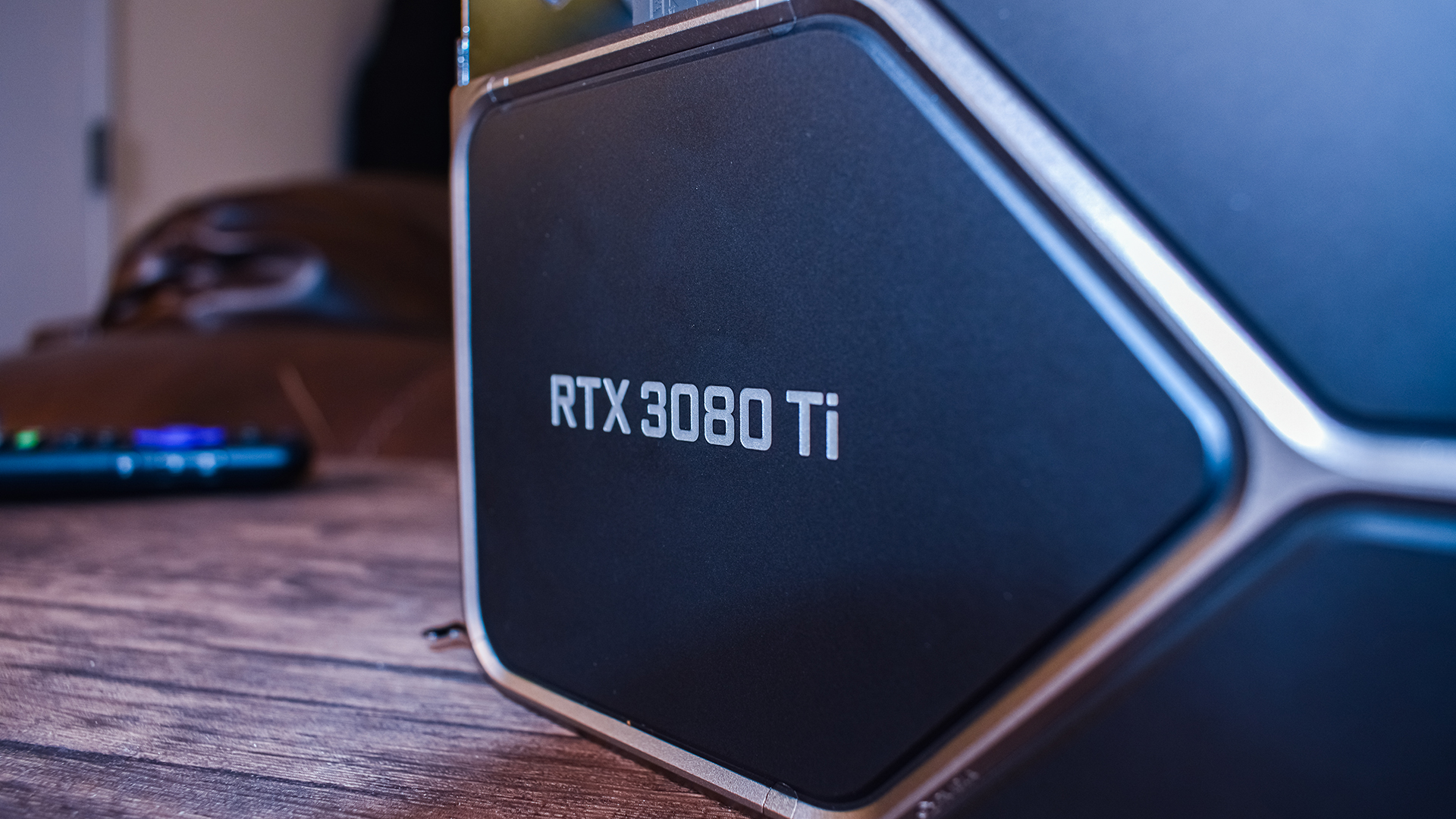
Just like the rest of the Nvidia GeForce RTX 30 series, the RTX 3080 Ti is built on the Nvidia Ampere architecture, and brings with it the same improvements as the rest of the lineup. There is something new to the table, however.
As with the Nvidia GeForce RTX 3060 that launched in March 2021, the Nvidia GeForce RTX 3080 Ti has a hardware-based hash rate limiter that should limit the appeal to cryptocurrency miners. We don’t test mining performance at TechRadar, so we can’t speak to how effective this limit actually is. But given that the hash rate limiter on the RTX 3060 was accidentally bypassed by Nvidia’s own driver update, we’ll just have to wait and see how well this actually dissuades miners from buying this graphics card in bulk.
Beyond that, the Nvidia GeForce RTX 3080 Ti is actually quite a bit beefier than the original RTX 3080, and that largely falls to core count and memory bandwidth.
Because, sure, the Nvidia GeForce RTX 3080 Ti does have more VRAM, with 12GB of GDDR6X compared to 10GB of the stuff on the original card, but it’s also on a faster 384-bit memory bus. That means you get 912 GB/s of memory bandwidth on the RTX 3080 Ti compared to the RTX 3080’s 760 GB/s. With faster VRAM, not to mention just more memory, the RTX 3080 Ti should be even more adept at 4K gaming in the future.
The RTX 3080 Ti is straight up more powerful, as well. The GPU has 10,240 CUDA cores across 80 compute units, compared to the RTX 3080’s 8,704 CUDA cores. That’s a 17% increase in core count, but don’t expect a strict 17% performance increase - more on that later.
You’re also going to get access to Nvidia’s whole suite of software features, and it’s not just limited to gaming.
The one we are still in love with is Nvidia Broadcast, which is ostensibly designed for streamers and content creators, but we find that it is incredibly useful in just day-to-day life. We use it a lot when we’re taking meetings, or even just hanging out with friends in Discord, especially because it filters out most of the New York City street noises outside our street-facing apartment window.
Of course, you also get access to Deep Learning Super Sampling, or DLSS. This tech uses the Tensor cores – the RTX 3080 Ti has 320 of those – to upscale a lower resolution to your native resolution. The idea is that DLSS will let you turn on more of the shiny graphics options, so you don’t have to sacrifice image quality just to hit a decent framerate, especially at high resolutions like 4K.
Design
The Nvidia GeForce RTX 3080 Ti we reviewed is Nvidia’s Founders Edition, and, well, it looks like the rest of the RTX 30-series Founders Edition cards. The graphics card has an attractive black and gunmetal gray colorway. You’ll aso see Nvidia and RTX 3080 Ti branding etched into the metal. That’s not something you’ll notice once you actually have the graphics card in your PC, but it’s a nice touch.
The RTX 3080 Ti is the exact same size and weight as the original RTX 3080, which means it’s 4.4 inches thick and 11.2 inches long, so it should fit in most cases.
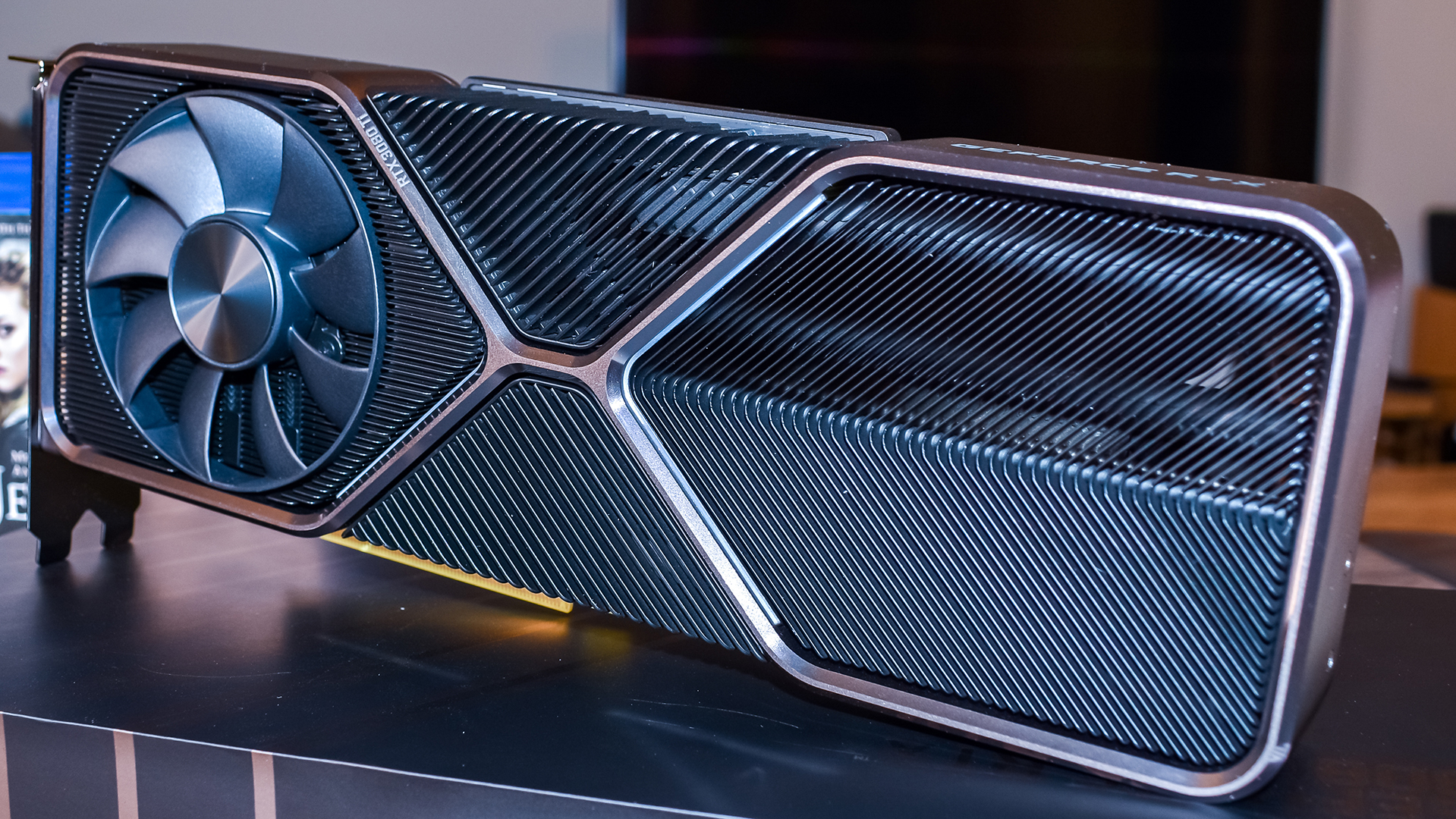
There are two fans on the RTX 3080 Ti and just like the RTX 3080 and RTX 3090, there’s one on the front and one on the back. This fan configuration pulls air through the front of the card, it’ll go through the card, and go out through a fan on the back of the card, probably shooting the hot air through the top of your case.
It’s an extremely effective method of cooling the RTX 3080 Ti, and even with a peak power consumption of 350W, the RTX 3080 Ti peaks at just 78.9C. That is a lot higher than the RTX 3090’s 72C peak temperature, even though that card has the same level of power consumption.
But it’s actually impressive that Nvidia was able to get that close in thermals, considering that it was able to shrink the cooler back down to a dual-slot design, rather than the giant triple-slot RTX 3090 Founders Edition.
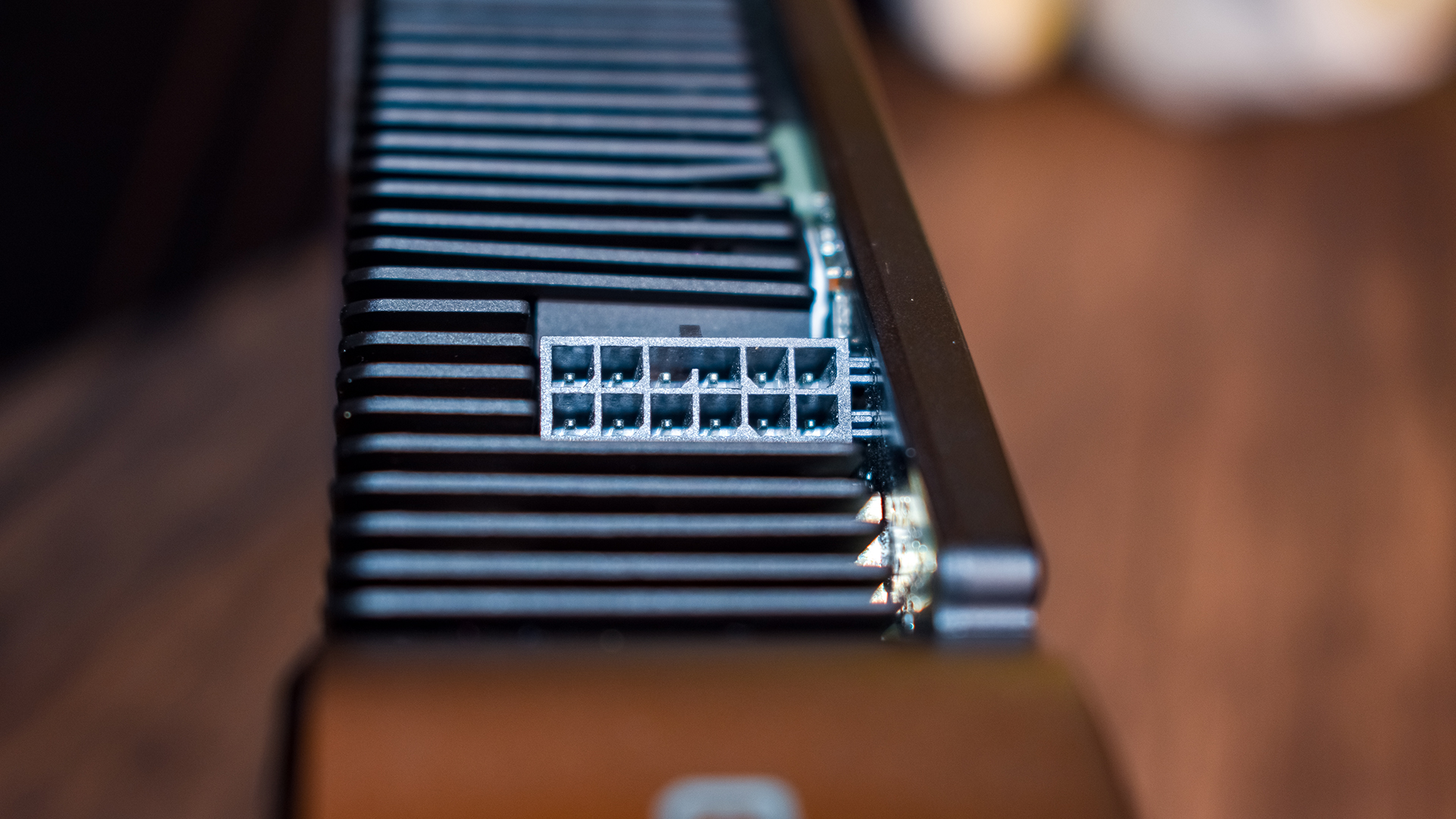
Finally, Nvidia has of course included the 12-pin power connector. It does mean that you’re probably going to have to use an adapter to power the Nvidia GeForce RTX 3080 Ti, but of course, Nvidia has included an adapter in the box.
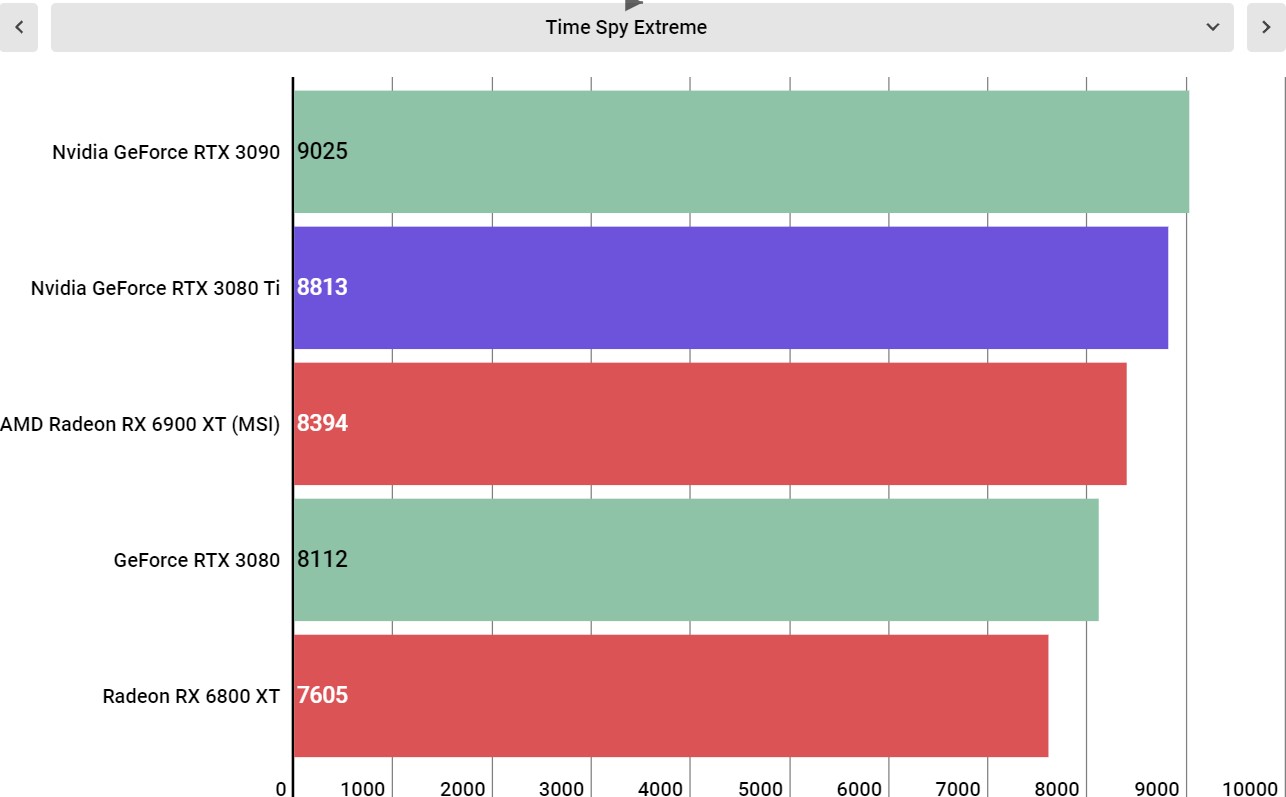
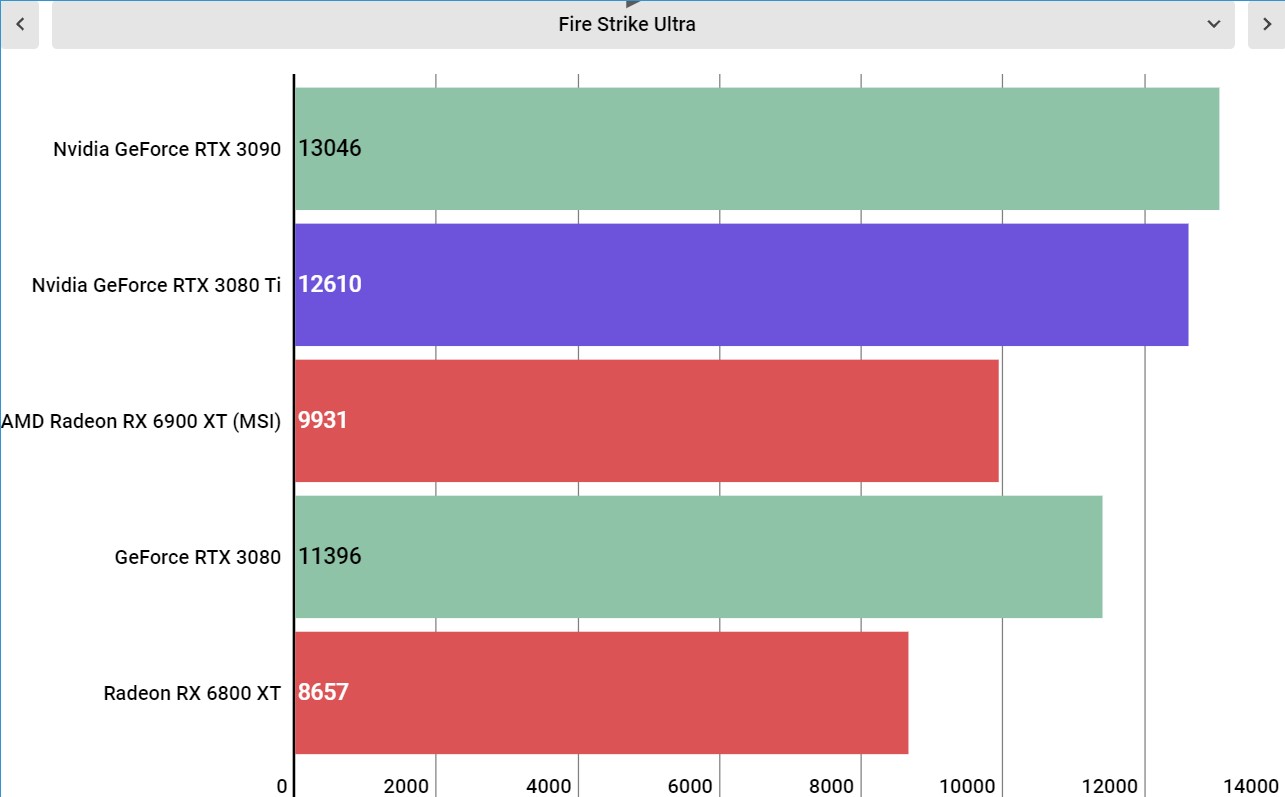
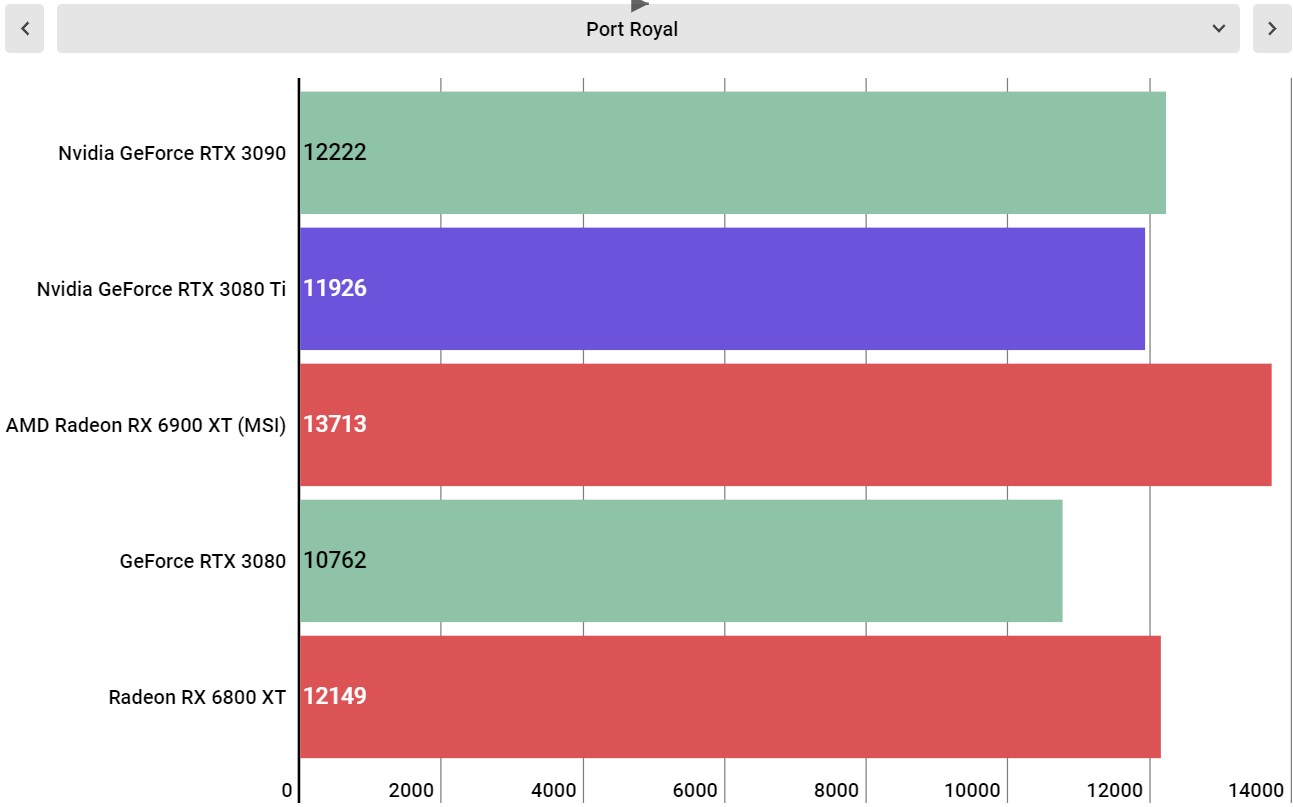
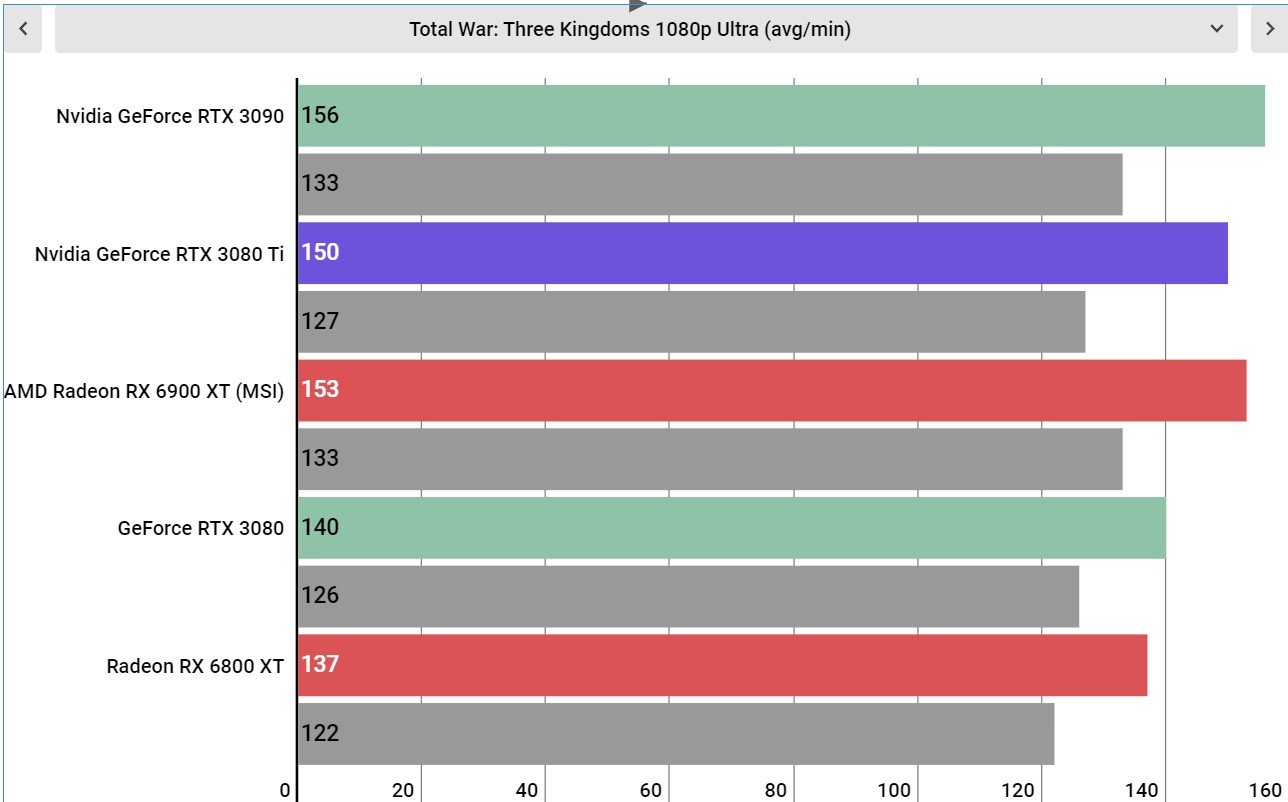
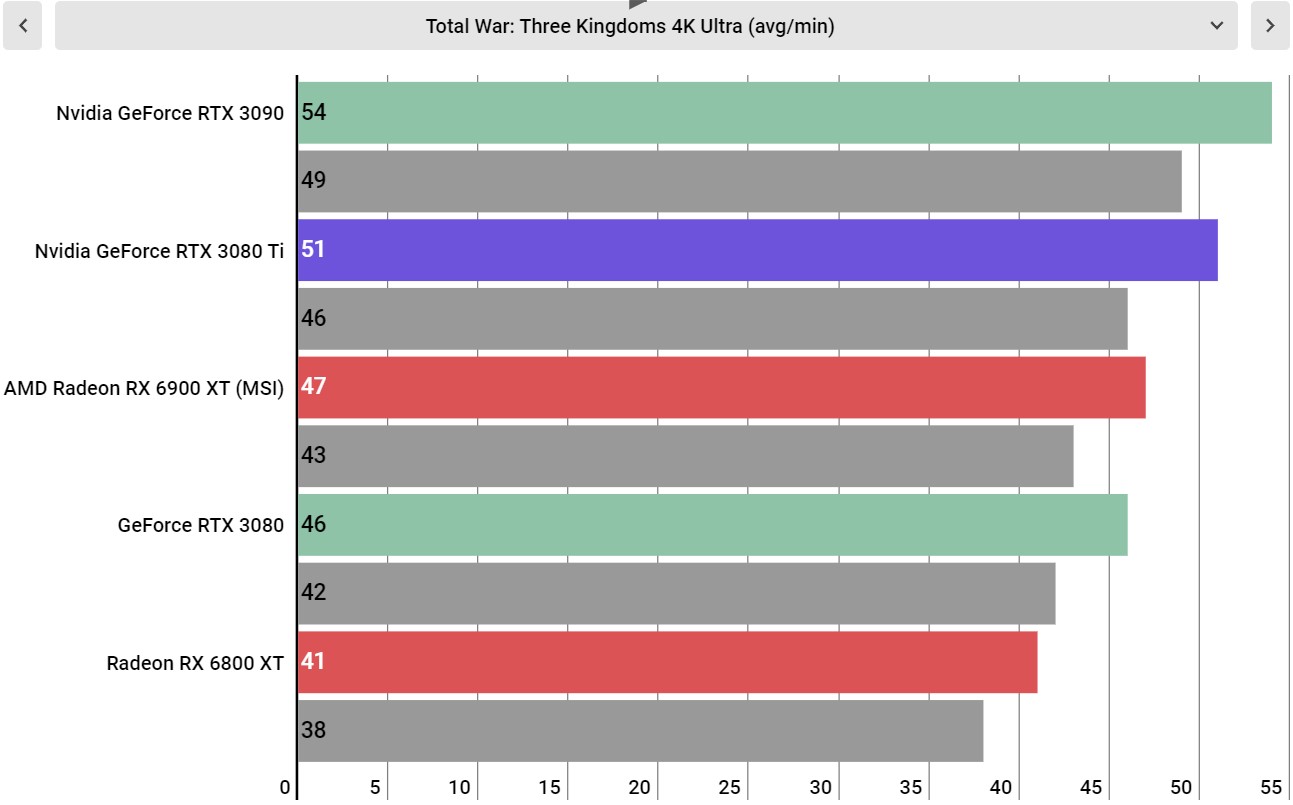
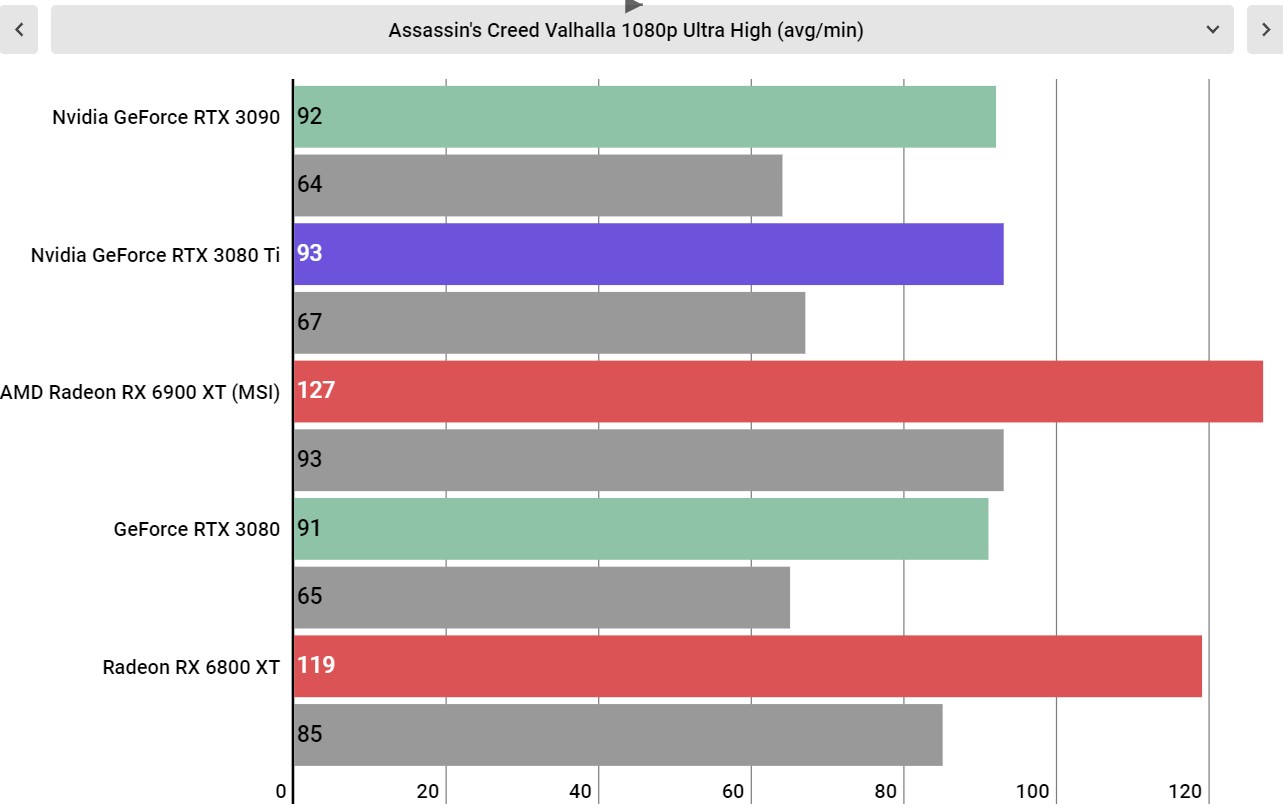
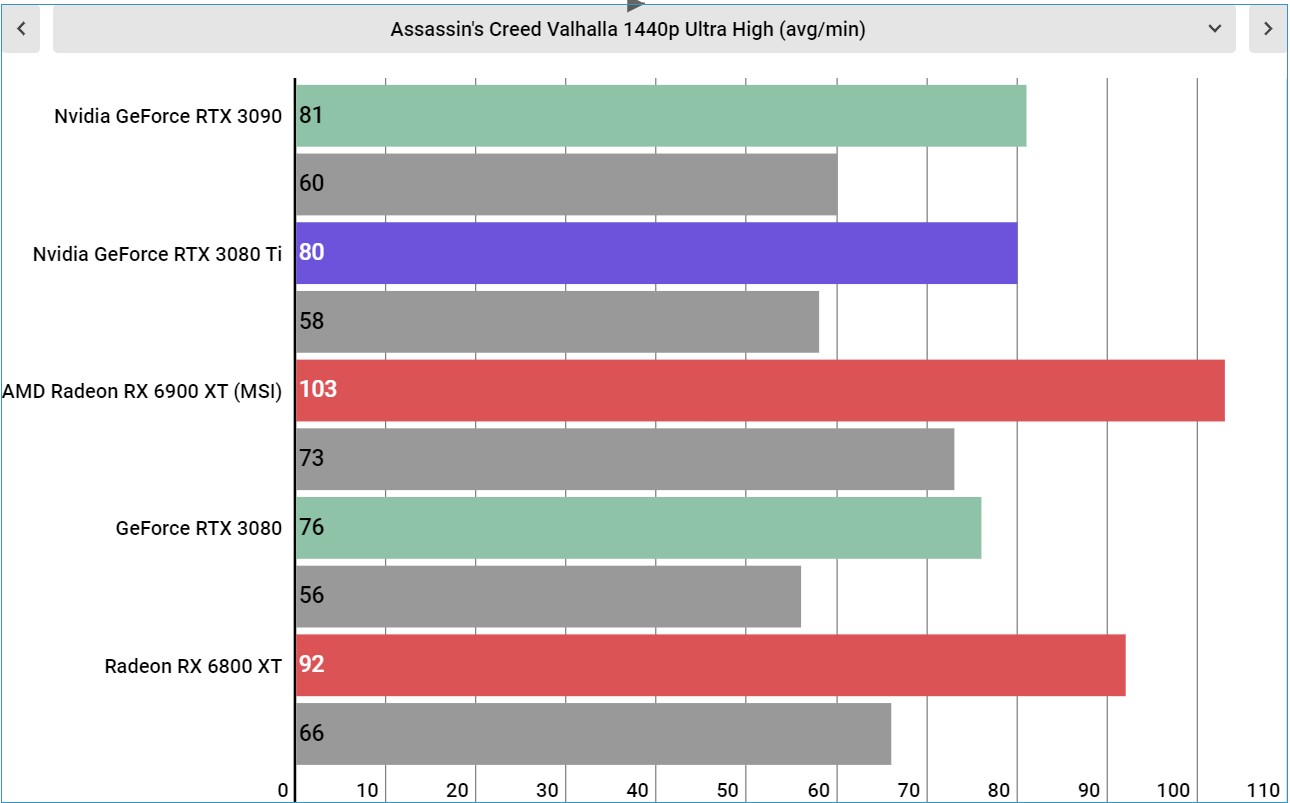
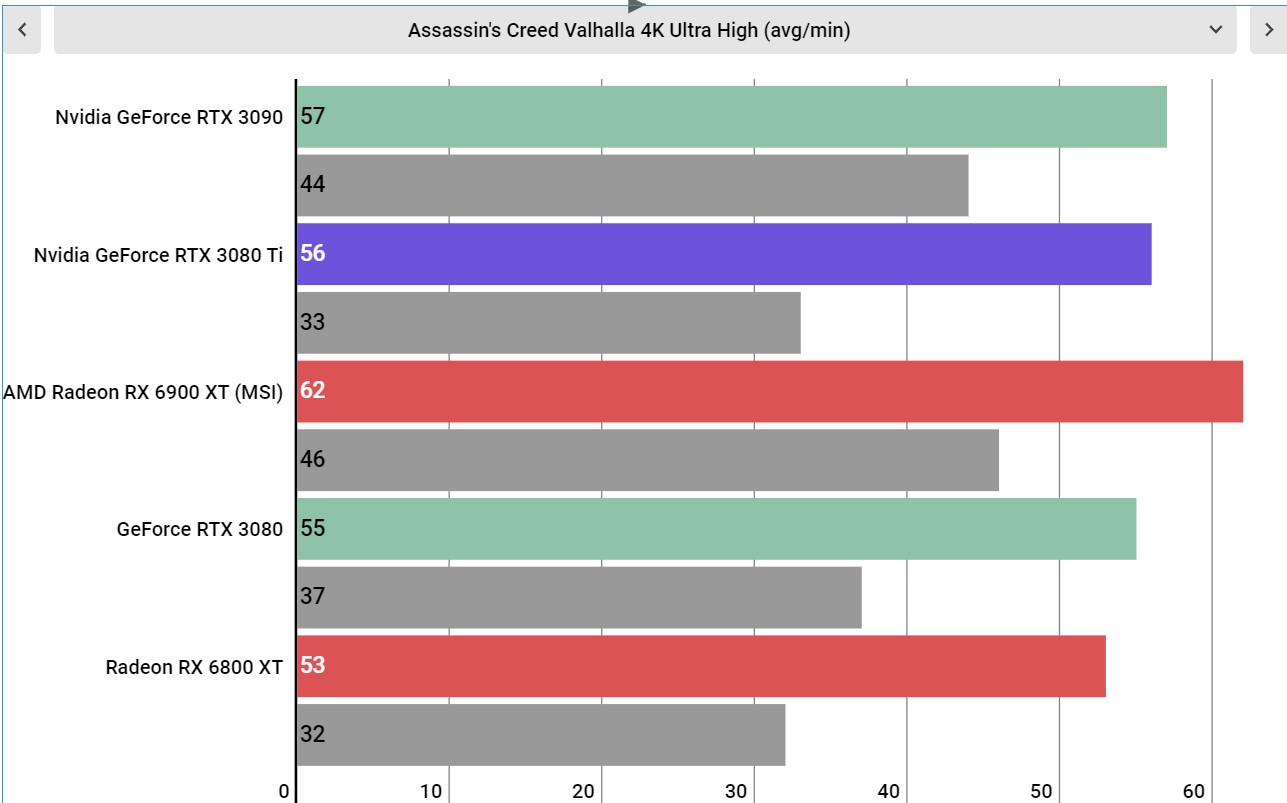
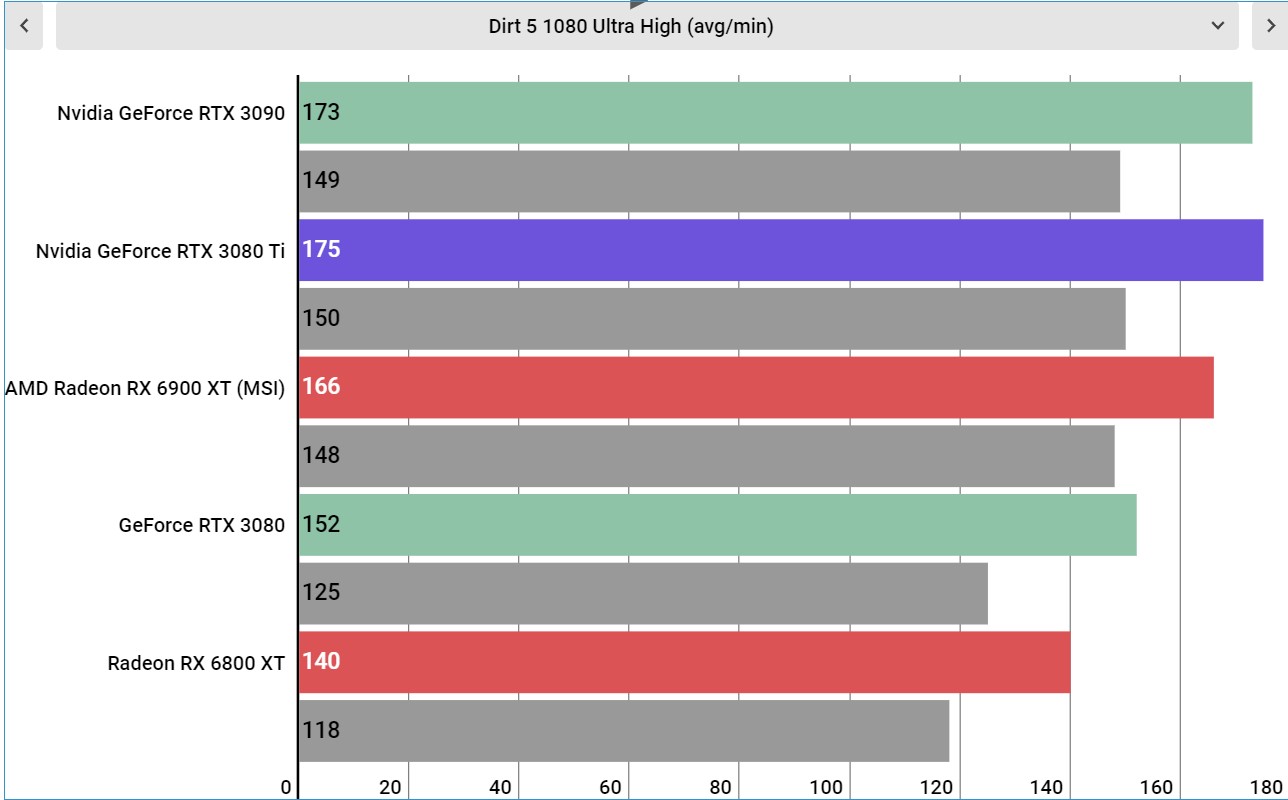
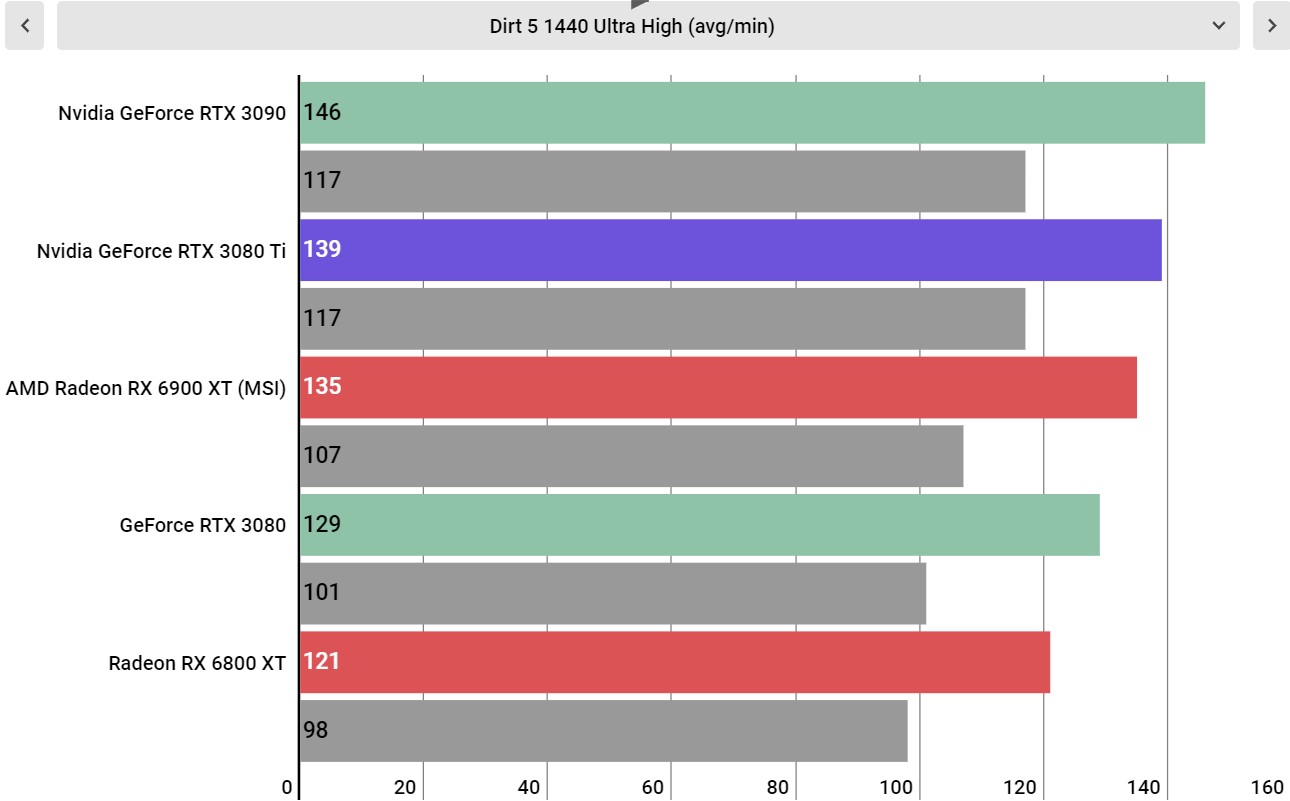
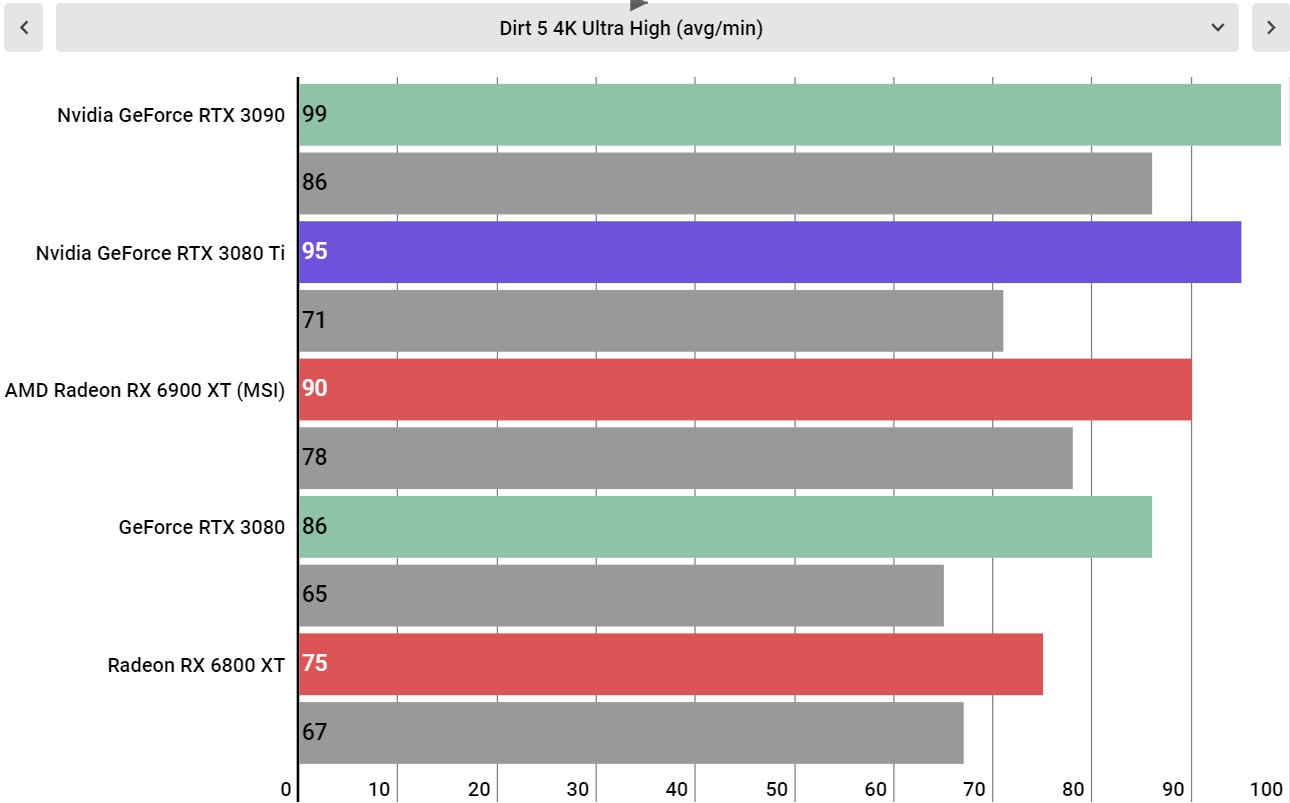
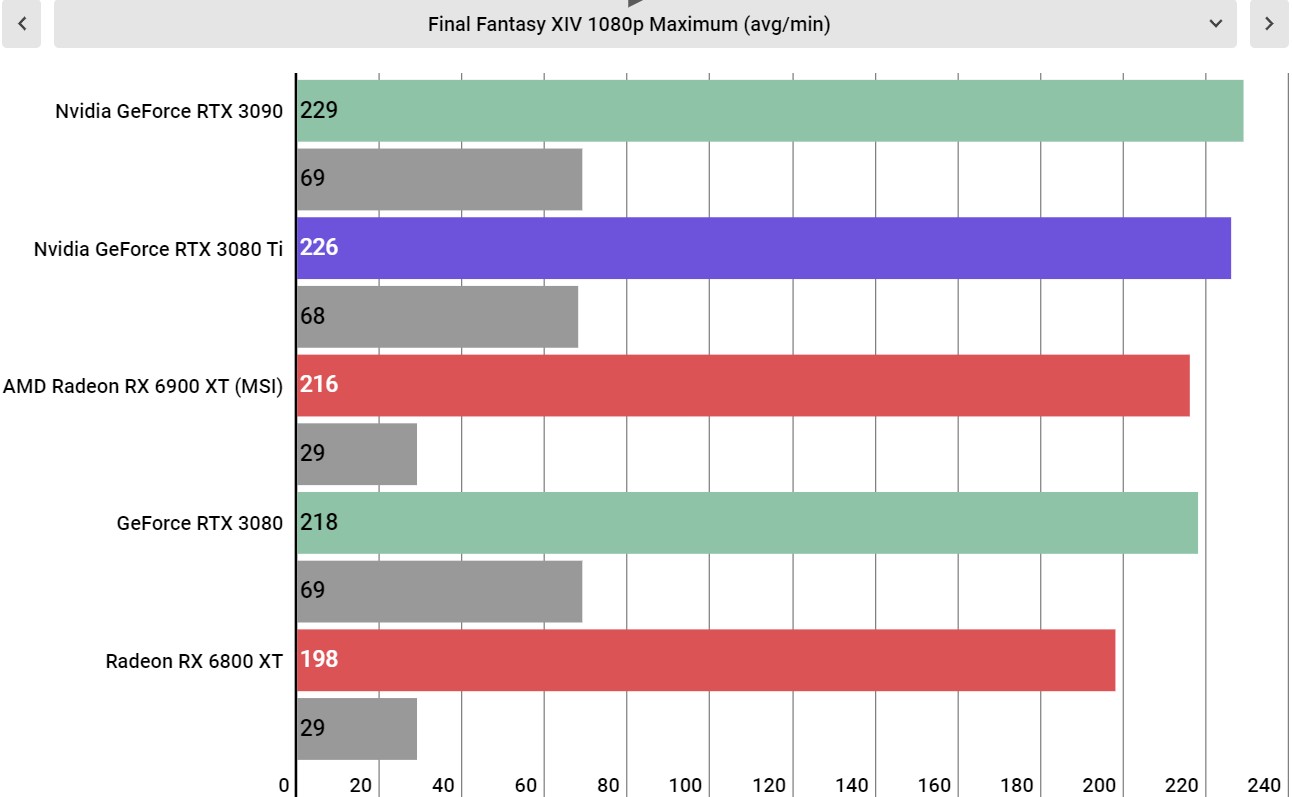
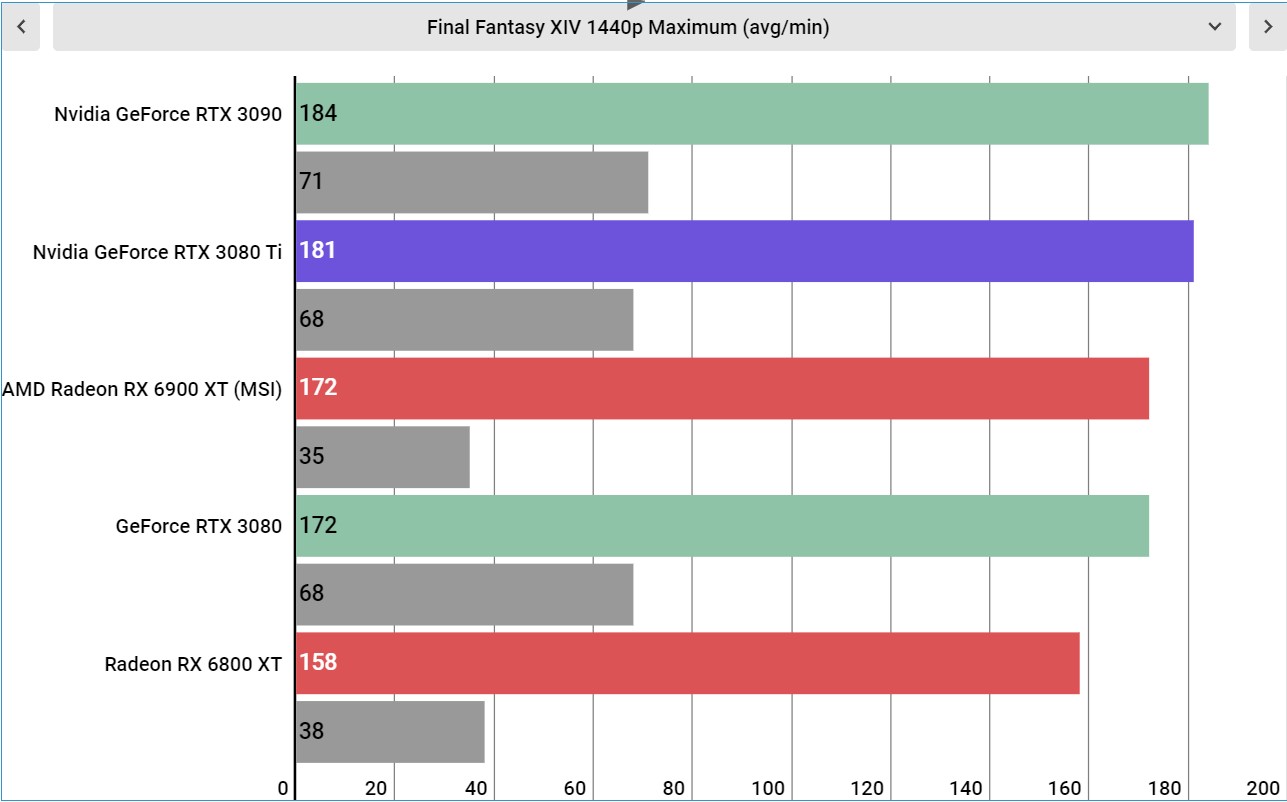
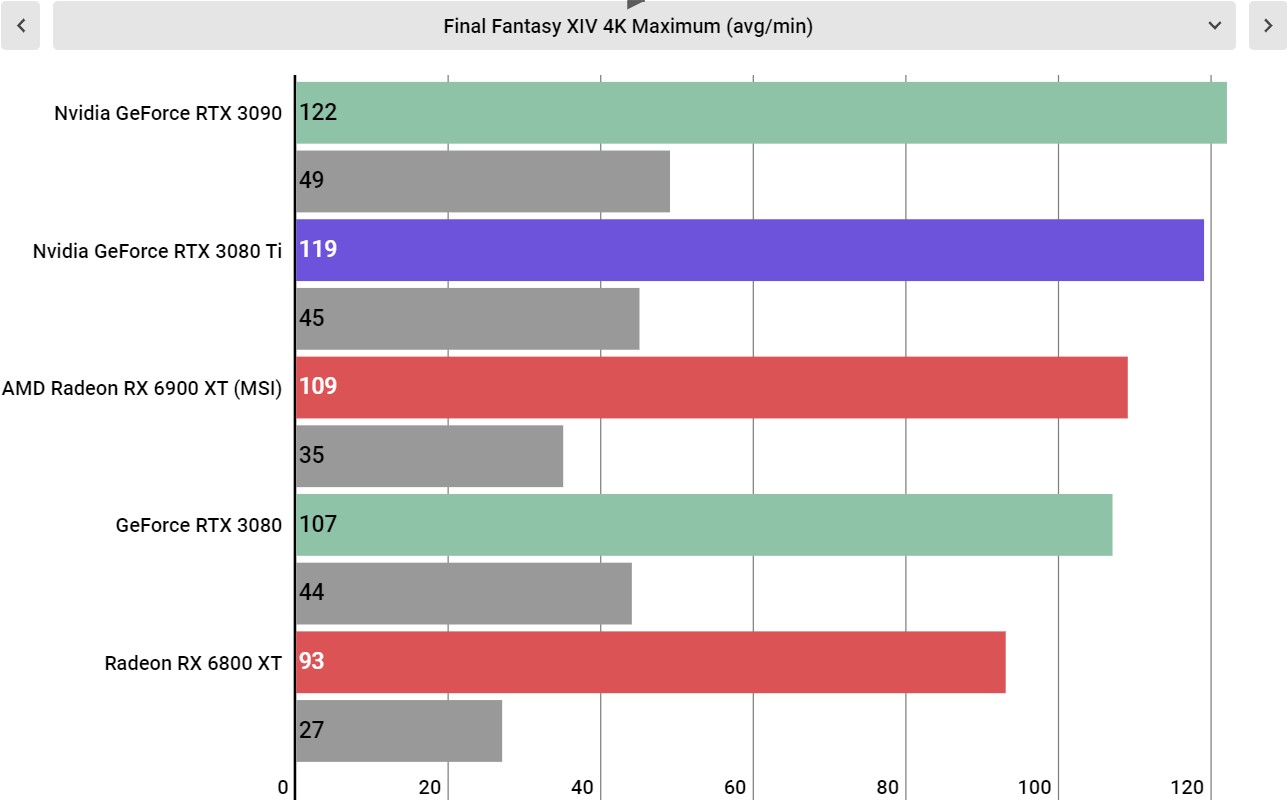
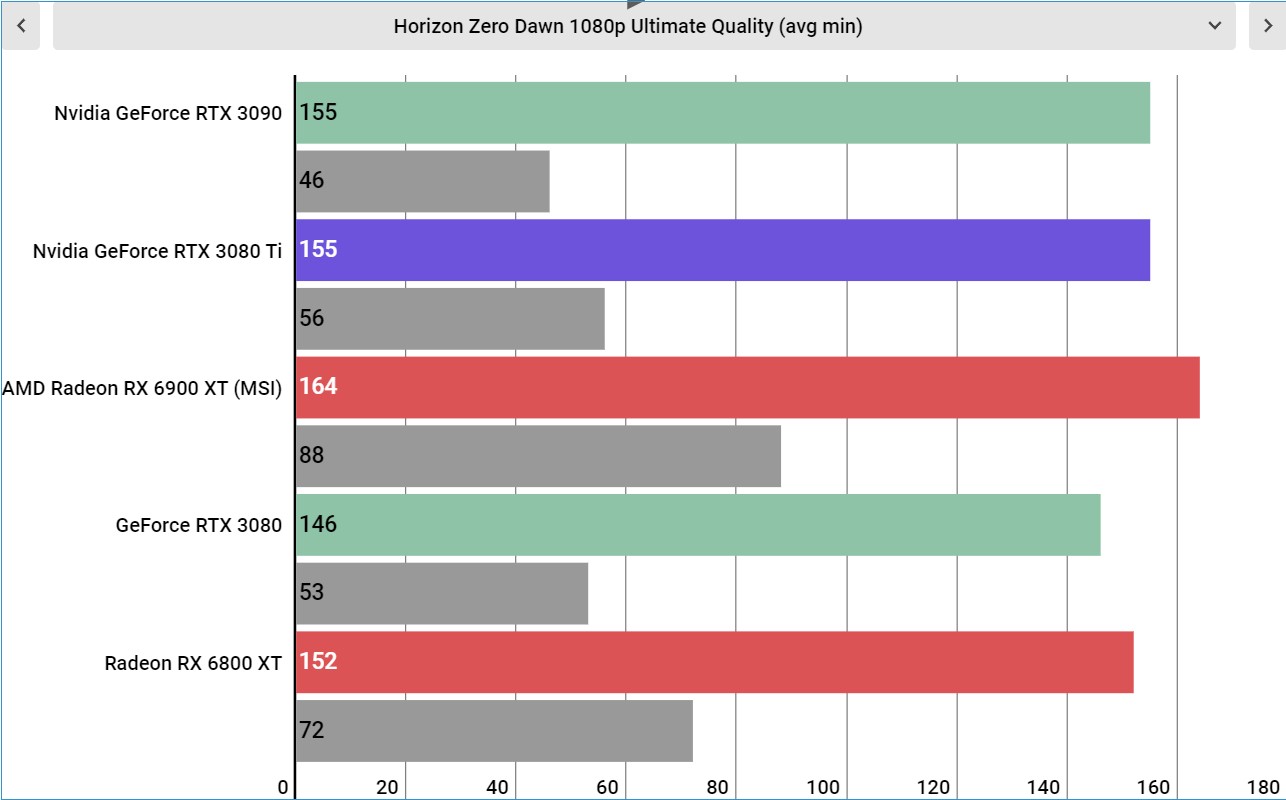
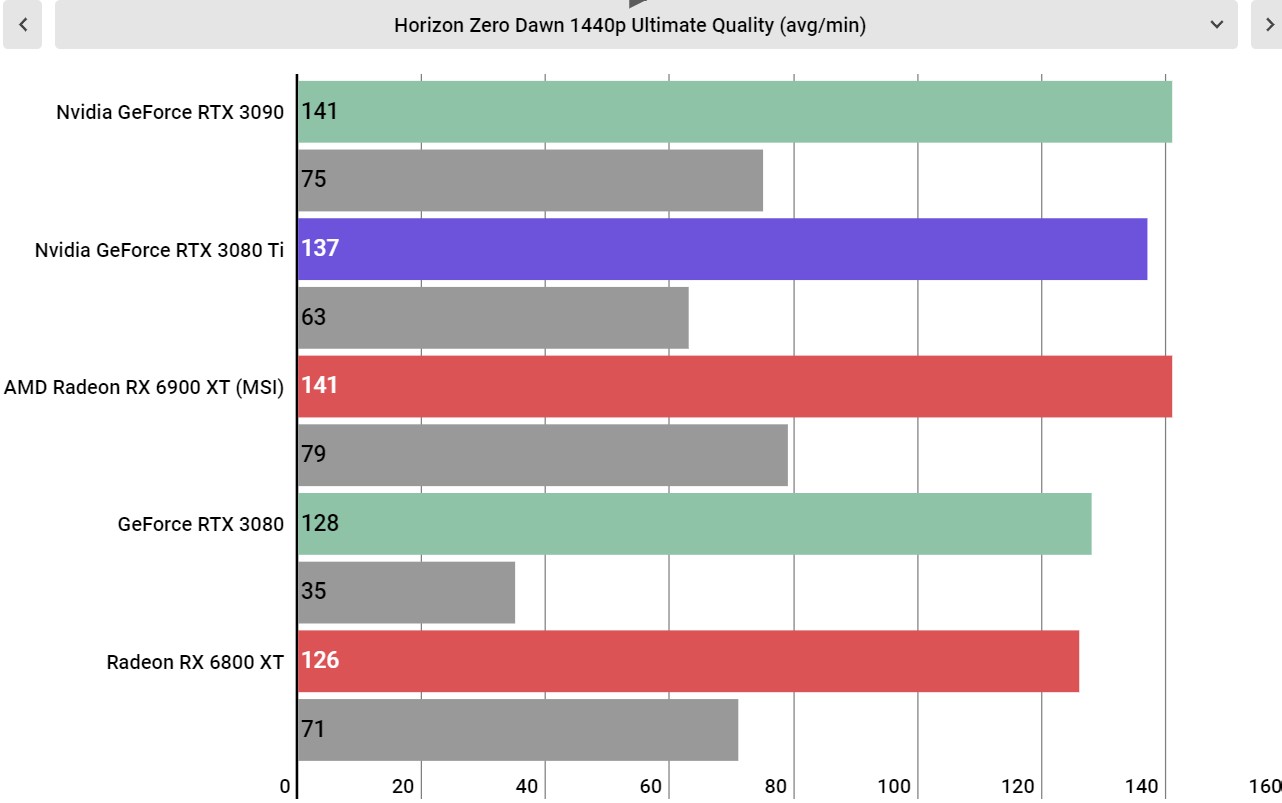
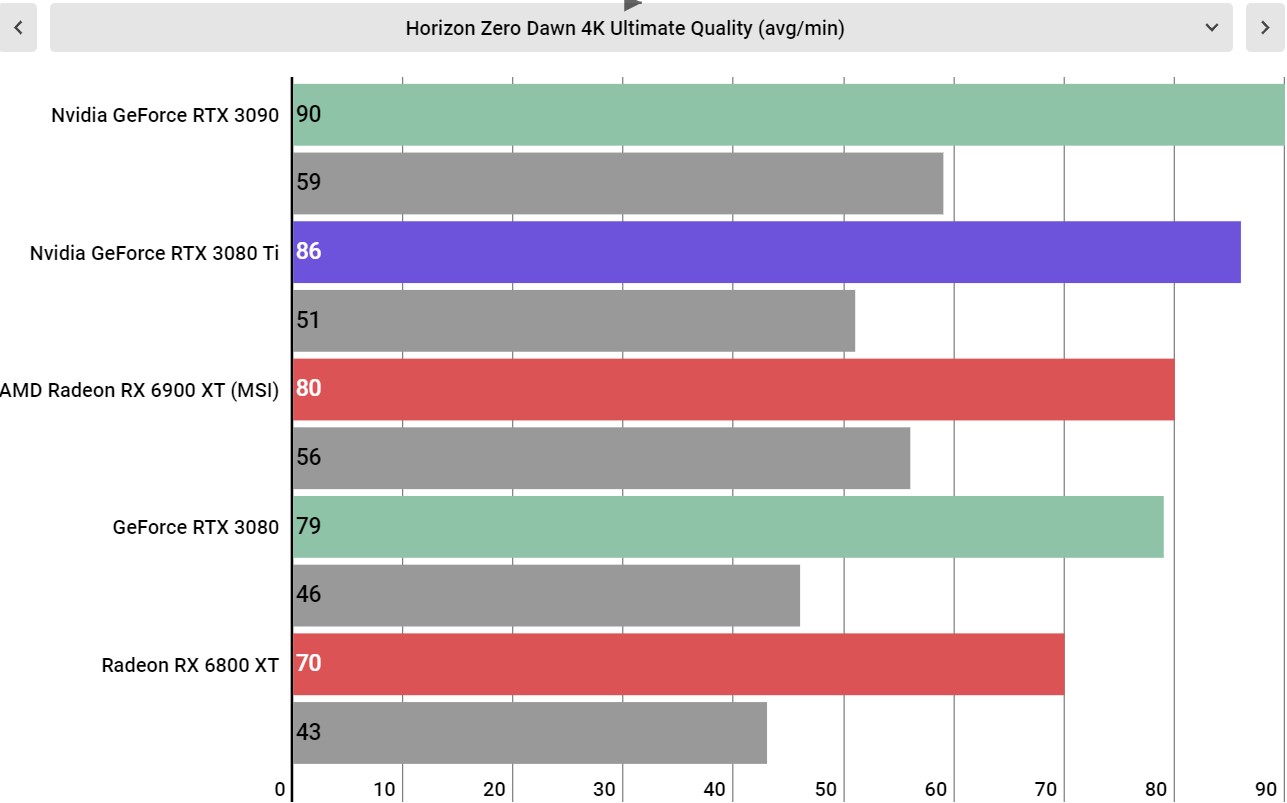
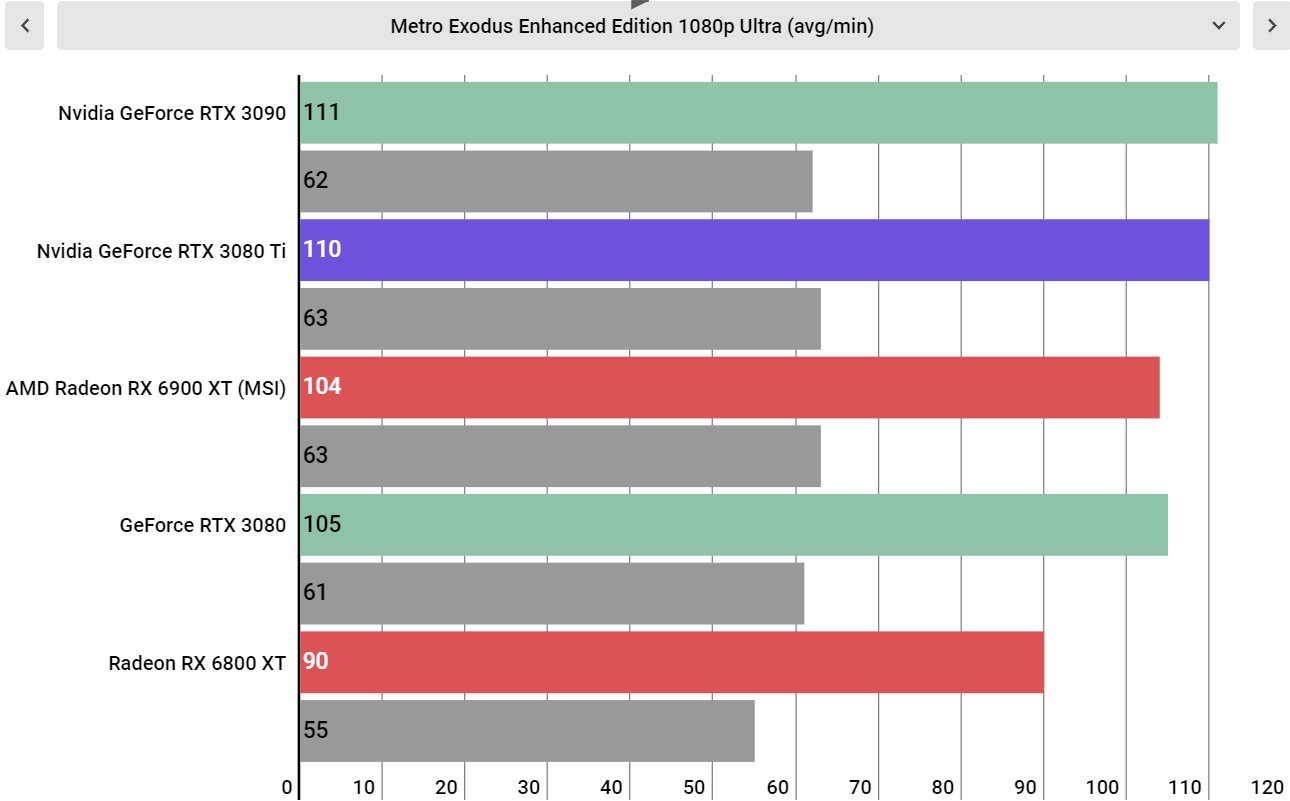
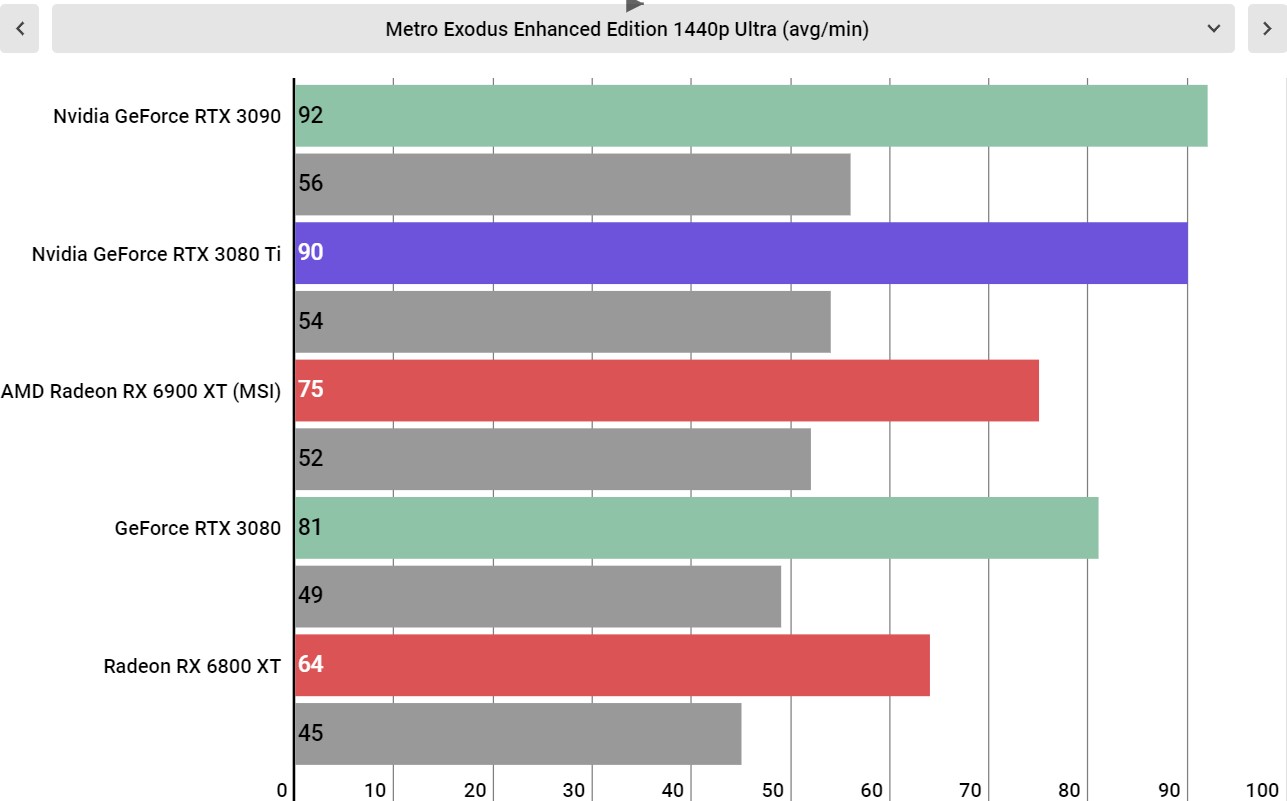
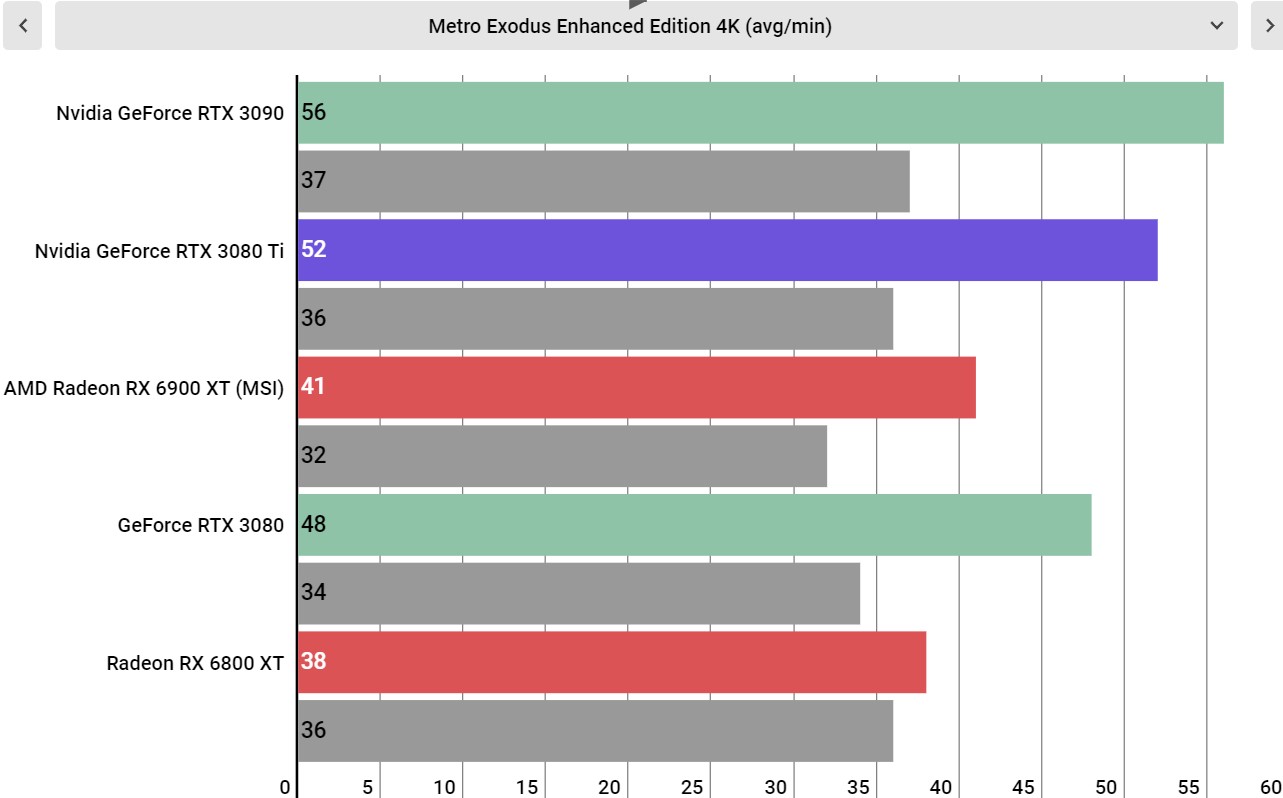
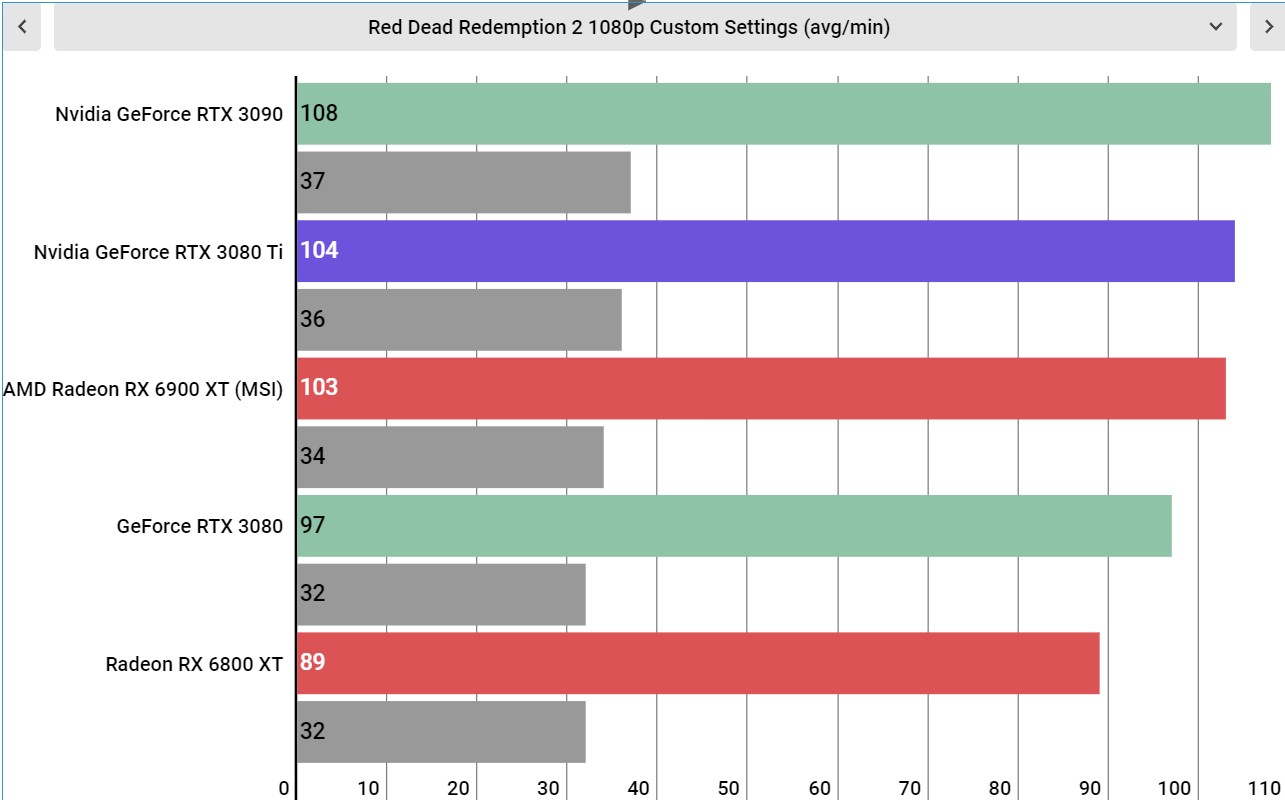
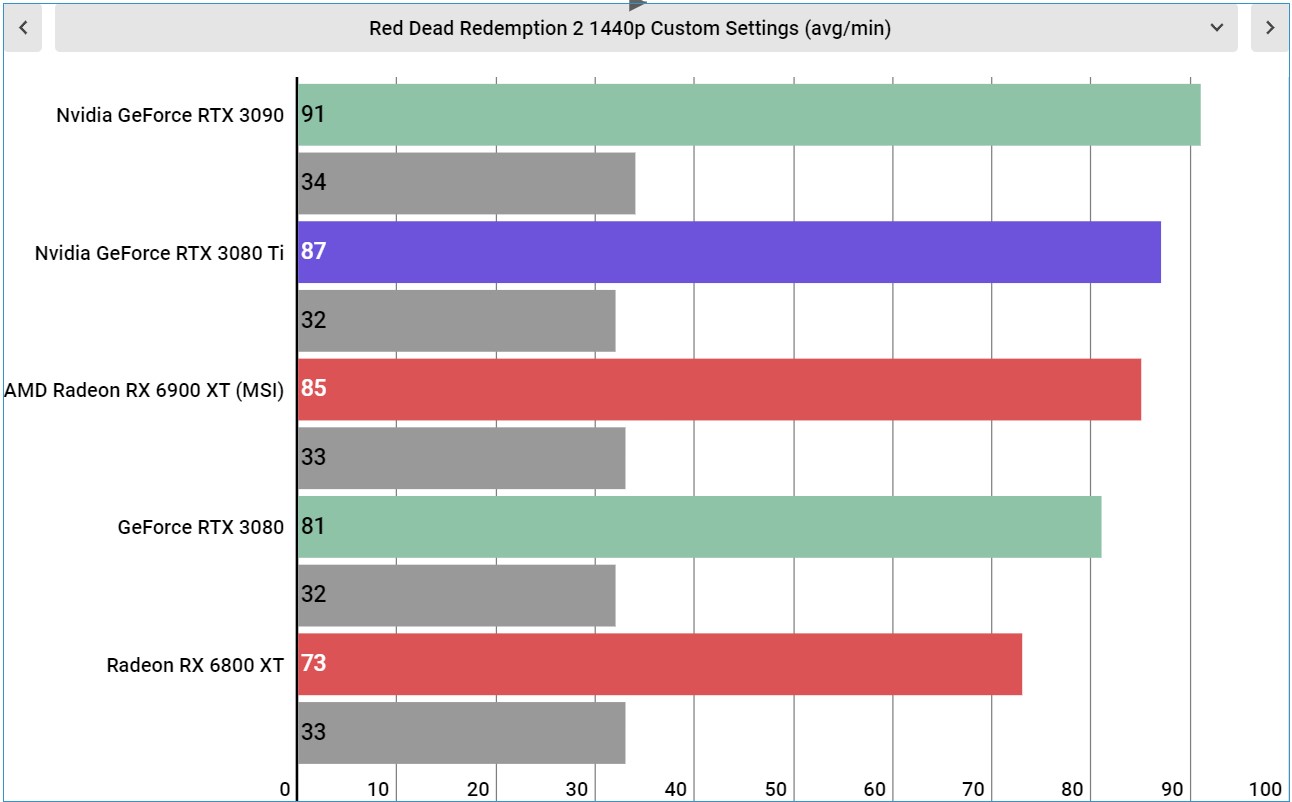
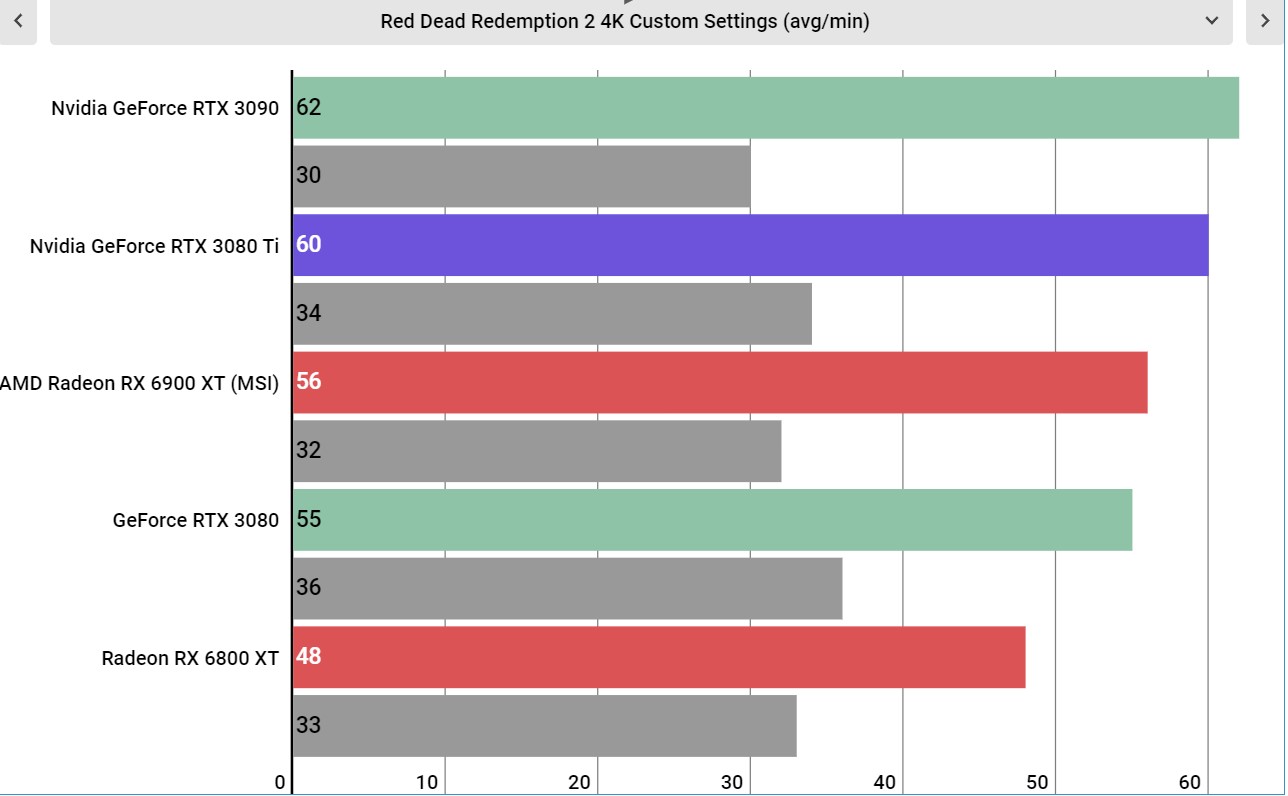
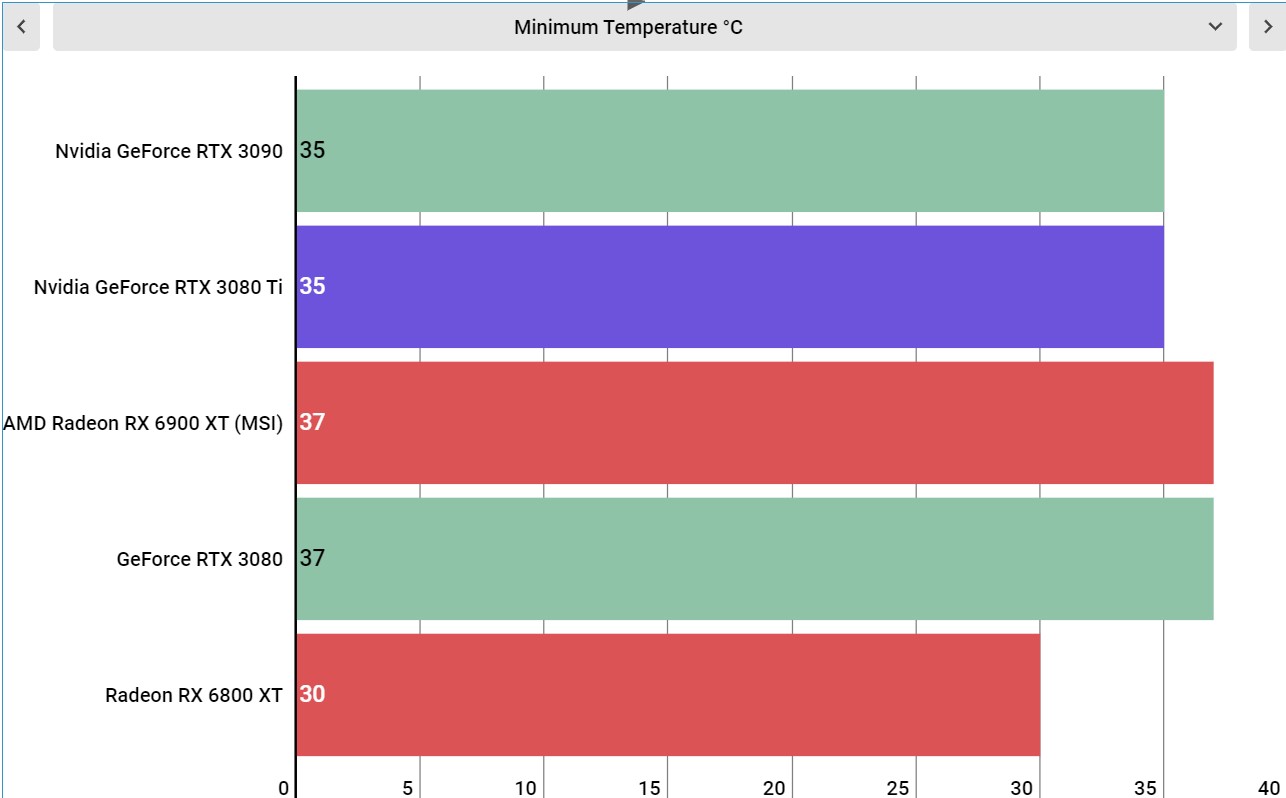
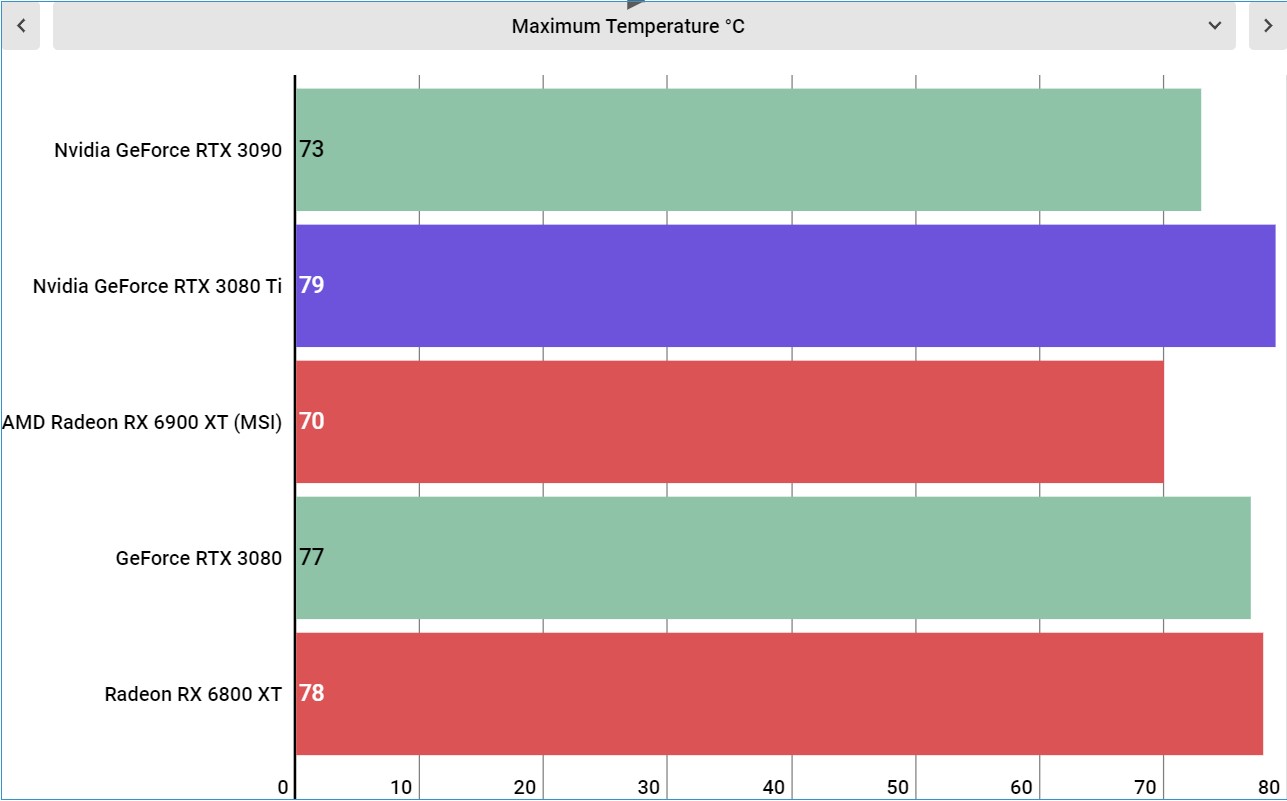
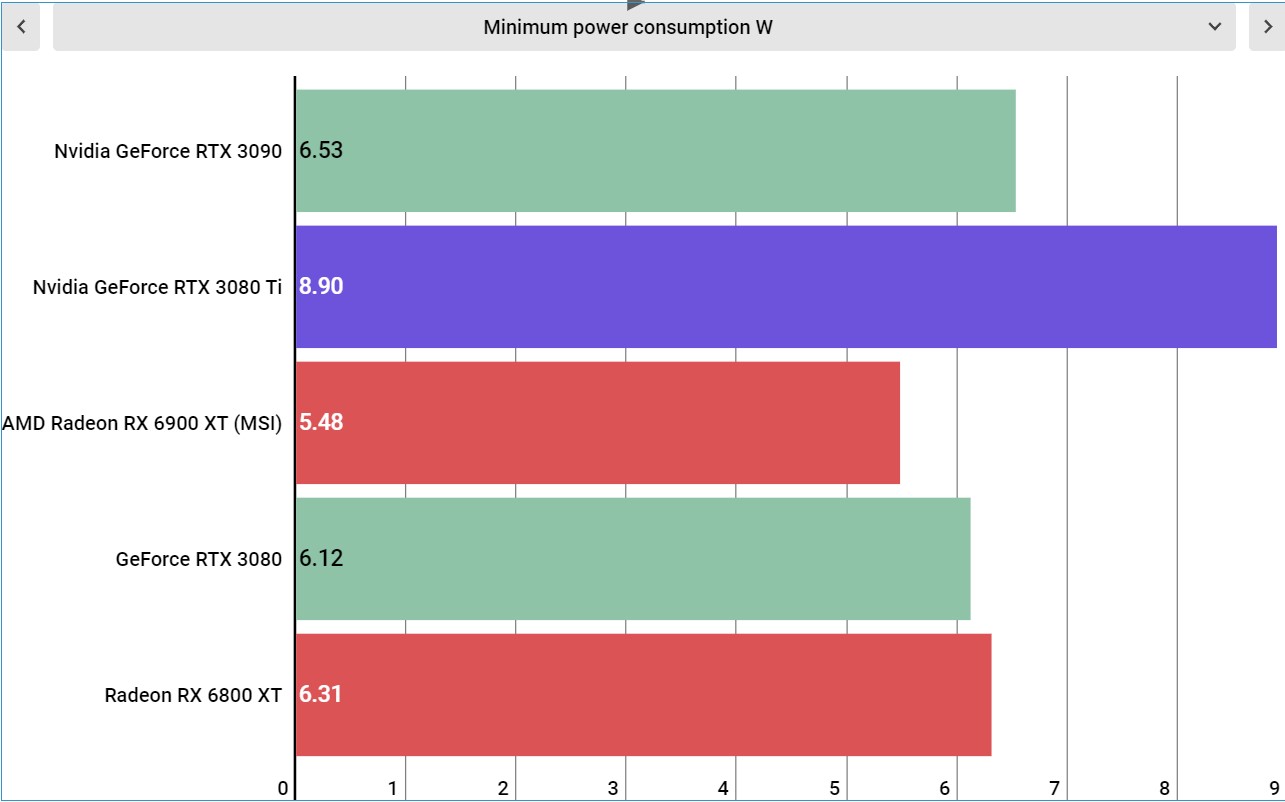
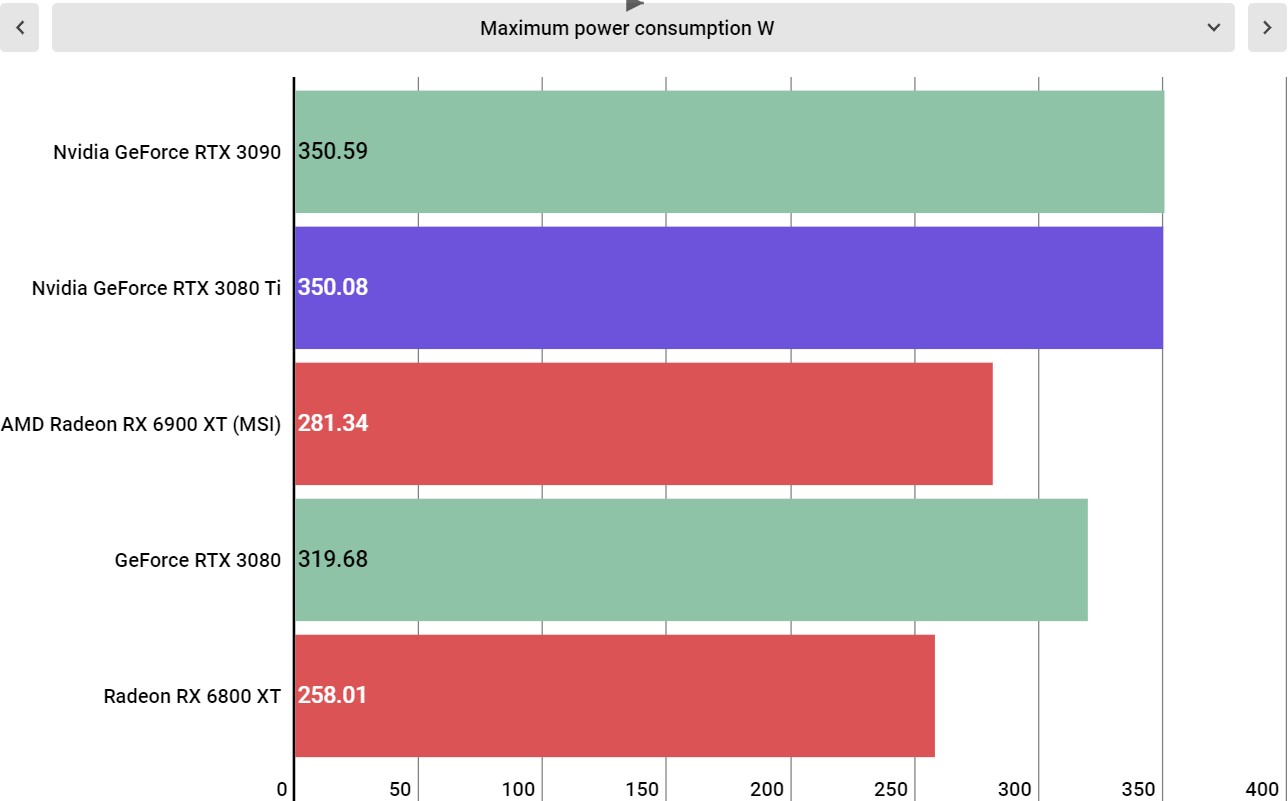
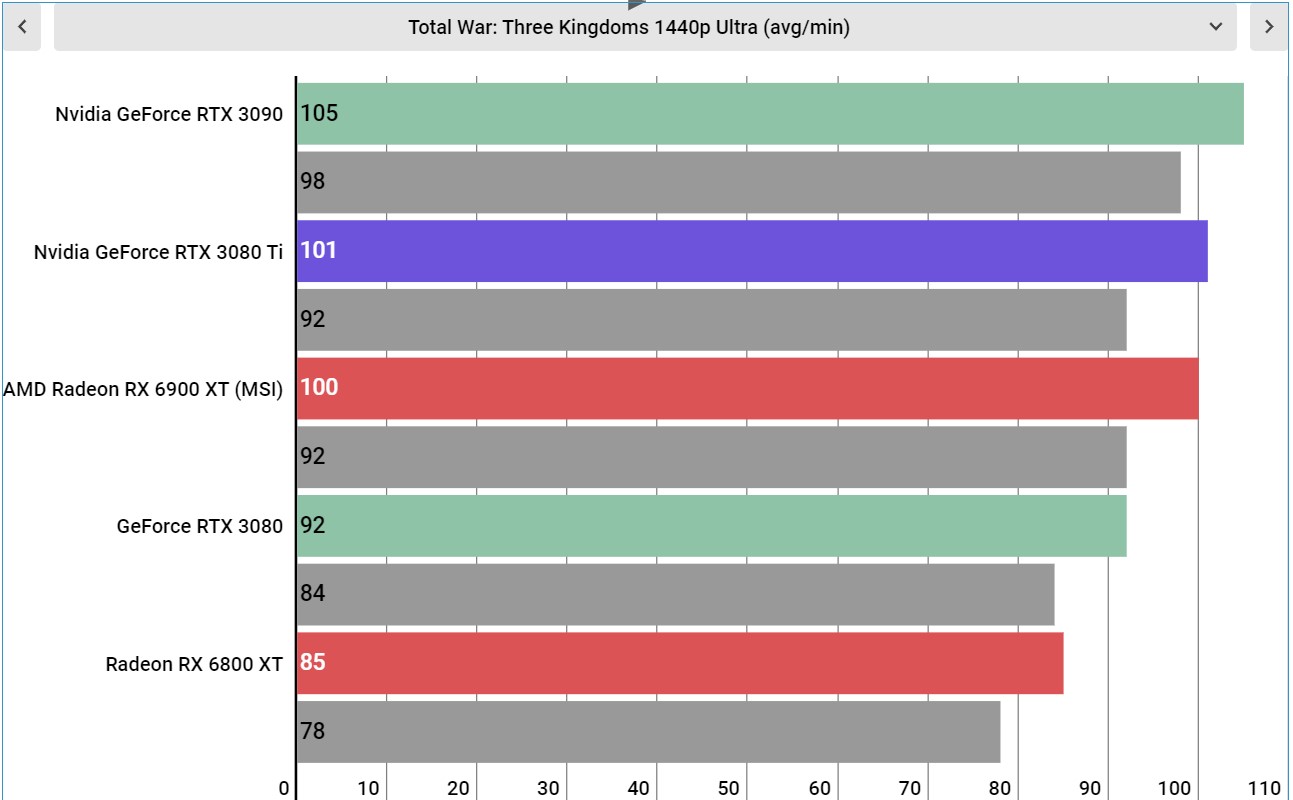
Performance
This is the system we used to test the Nvidia GeForce RTX 3080 Ti Founders Edition:
CPU: Intel Core i9-11900K (8-core, up to 5.3GHz)
CPU Cooler: Cooler Master Masterliquid 360P Silver Edition
RAM: 64GB Corsair Dominator Platinum @ 3,200MHz
Motherboard: MSI MEG Z590 ACE
SSD: ADATA XPG SX8200 Pro @ 1TB
Power Supply: Phanteks RevoltX 1200
Case: Praxis Wetbench
The Nvidia GeForce RTX 3080 Ti is basically as fast as the RTX 3090 in PC games, even despite the fact that it has half the VRAM. So, the RTX 3080 Ti is what you should buy if you want the best gaming performance you can get right now, and don’t really need to be running Blender or Resolve all the time.
And when we say that the performance is exactly the same, we’re not really exaggerating. Across our entire suite of benchmarks, the RTX 3080 Ti is usually within 1-2 fps of the RTX 3090. The biggest difference between the two is in Dirt 5 at 1440p, where the RTX 3080 Ti gets 139 fps to the RTX 3090’s 146 fps. But if you’re playing Dirt 5, you’re probably not going to notice that 5% performance difference.
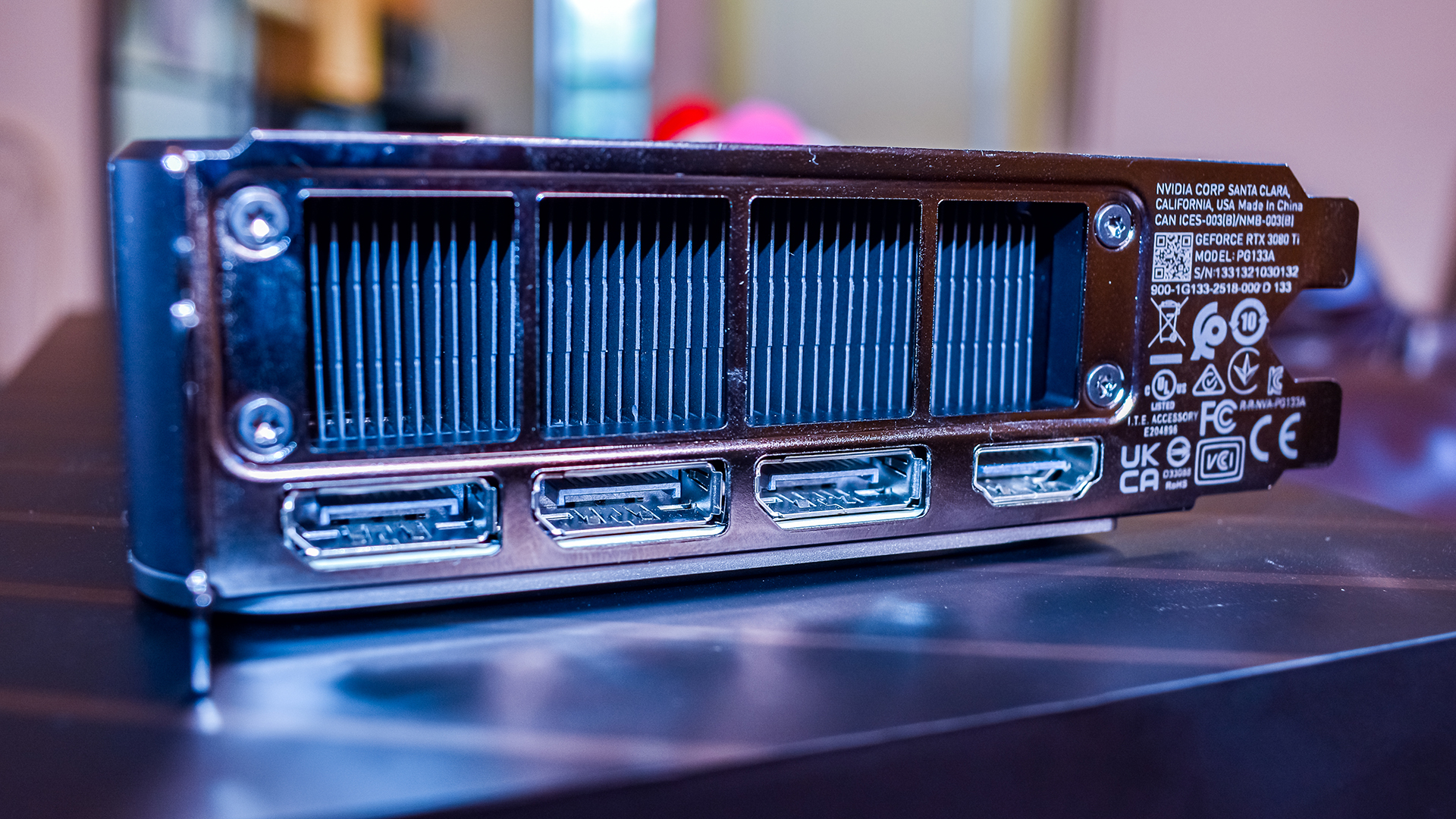
The Nvidia GeForce RTX 3080 Ti also beats the AMD Radeon RX 6900 XT in all but two tests: Fire Strike Ultra and Assassins Creed Valhalla. But even then, at 4K the RTX 3080 Ti delivers the same performance as the RTX 3090, so you’re getting extremely good performance either way.
In the rest of the games though, the AMD Radeon RX 6900 XT is between 7-26% slower than the RTX 3080 Ti, so Assassins Creed Valhalla is definitely not the norm. This would usually be enough to make us flatly recommend the RTX 3080 Ti over the Radeon RX 6900 XT, but if we’re just going off of MSRP, Nvidia’s Graphics card is an extra $200. So, you’re going to want to make sure that the RTX 3080 Ti is worth that extra cost.
For pretty much any game that you’re looking to play, the Nvidia GeForce RTX 3080 Ti is going to be able to max it out at 4K, and that’s including all the fancy ray tracing effects you’ve probably been hearing about.
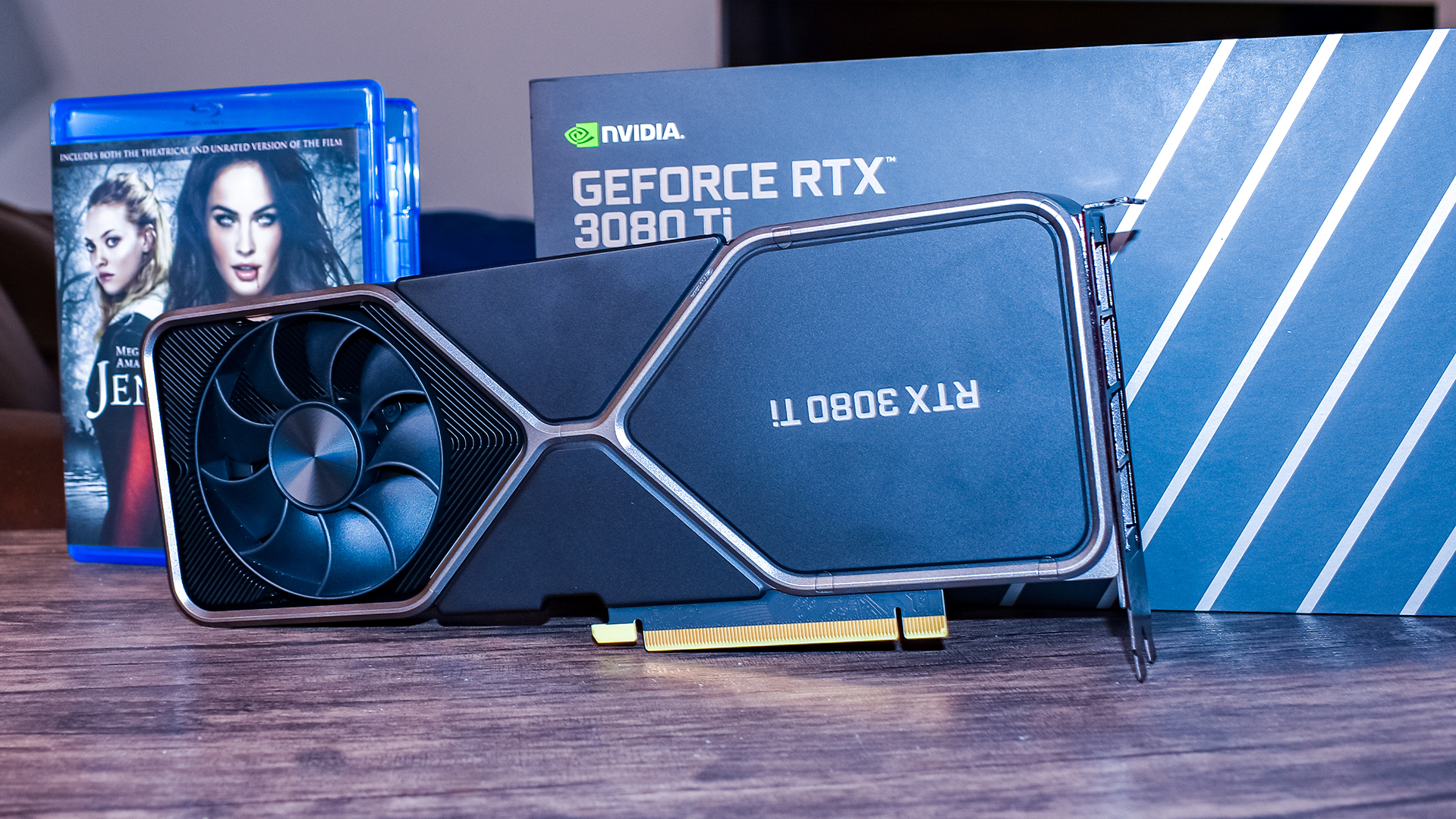
Buy it if…
You want no-compromises gaming performance
Because the RTX 3080 Ti basically brings the same level of performance as the RTX 3090 for a bit less money, this is the graphics card to get if you just want a top-notch gaming experience.
You have the budget for it
Even before accounting for aftermarket price increases, the Nvidia GeForce RTX 3080 Ti is an expensive graphics card. But, it is the best of the best, and we think it’s worth the price if you can afford it.
You want DLSS and ray tracing
Next to the Nvidia GeForce RTX 3090, the Nvidia GeForce RTX 3080 Ti is the best graphics card on the market right now if you care about ray tracing, and DLSS will help boost that performance even more.
Don’t buy it if...
You’re on a budget
Any graphics card in 2021 is expensive, but the Nvidia GeForce RTX 3080 Ti is one of the priciest ones out there.
You have a low-wattage power supply
The RTX 3080 Ti peaks at around 350W of power, so we recommend at least an 800W PSU. So, you might need an upgrade if you have a lesser power supply.
- These are the best graphics cards of 2021
0 comments:
Post a Comment